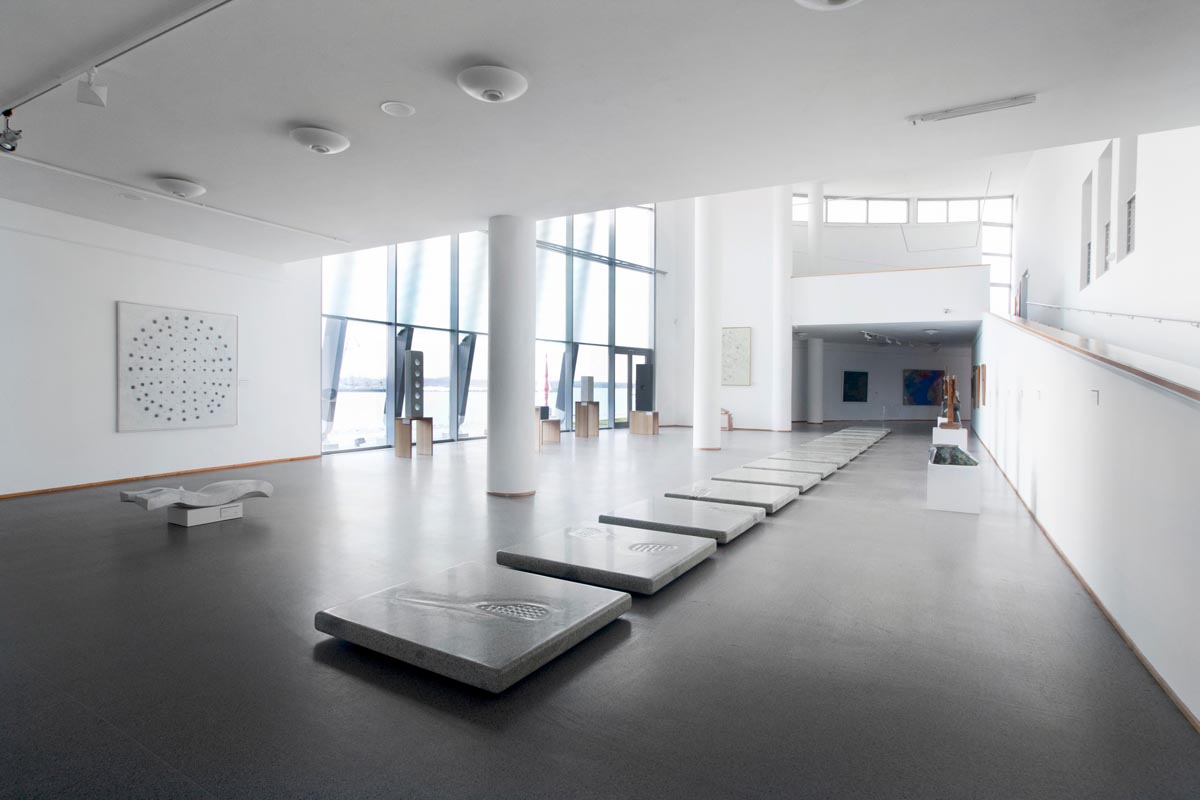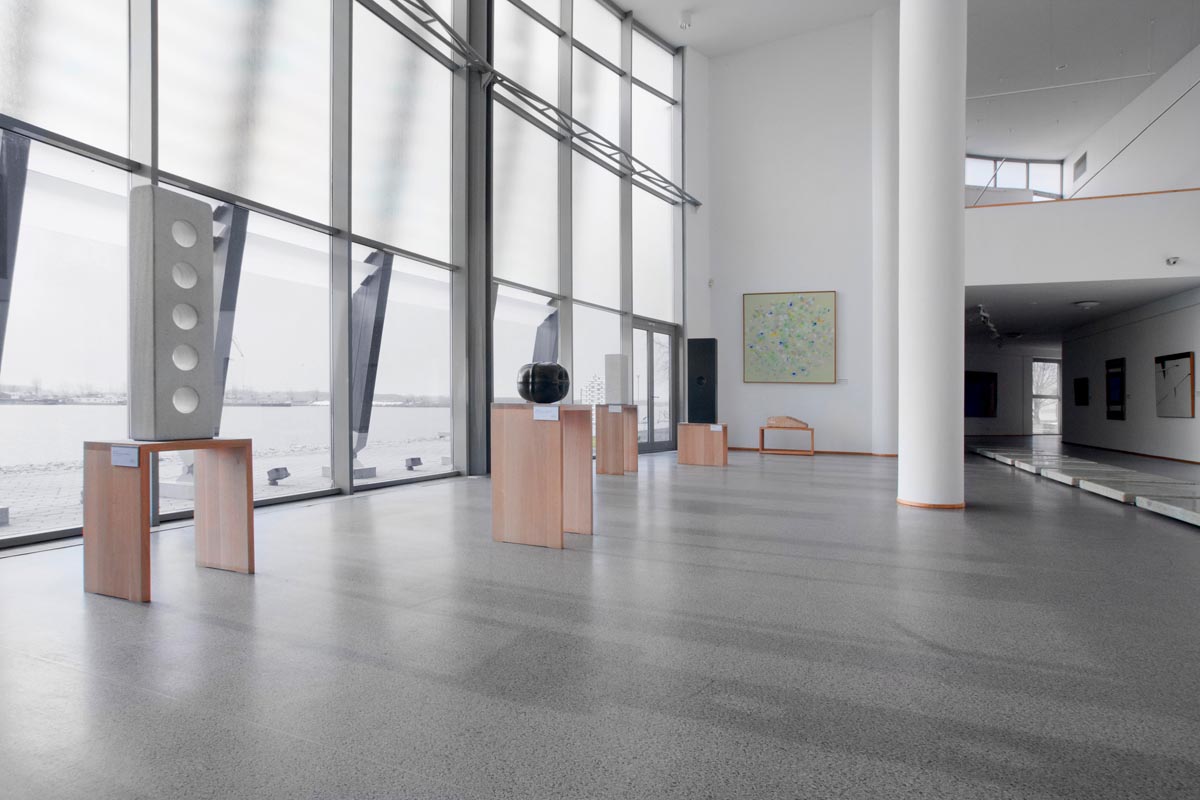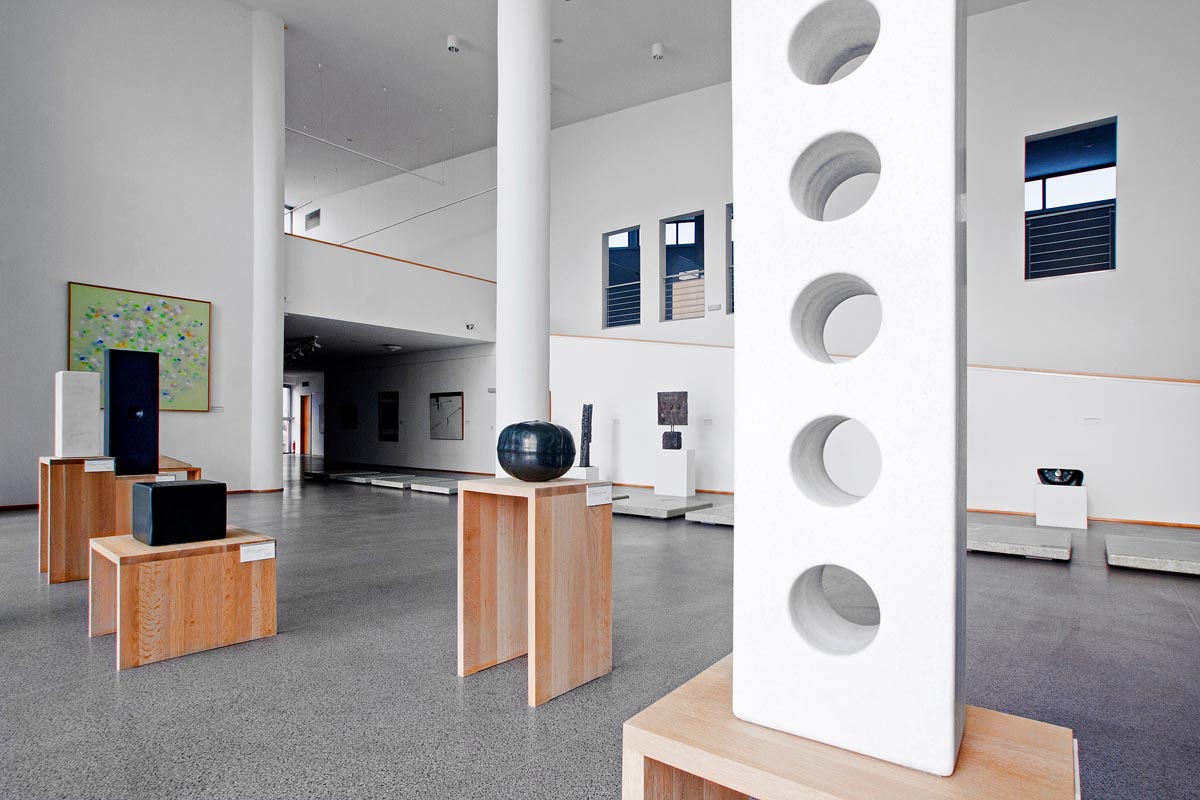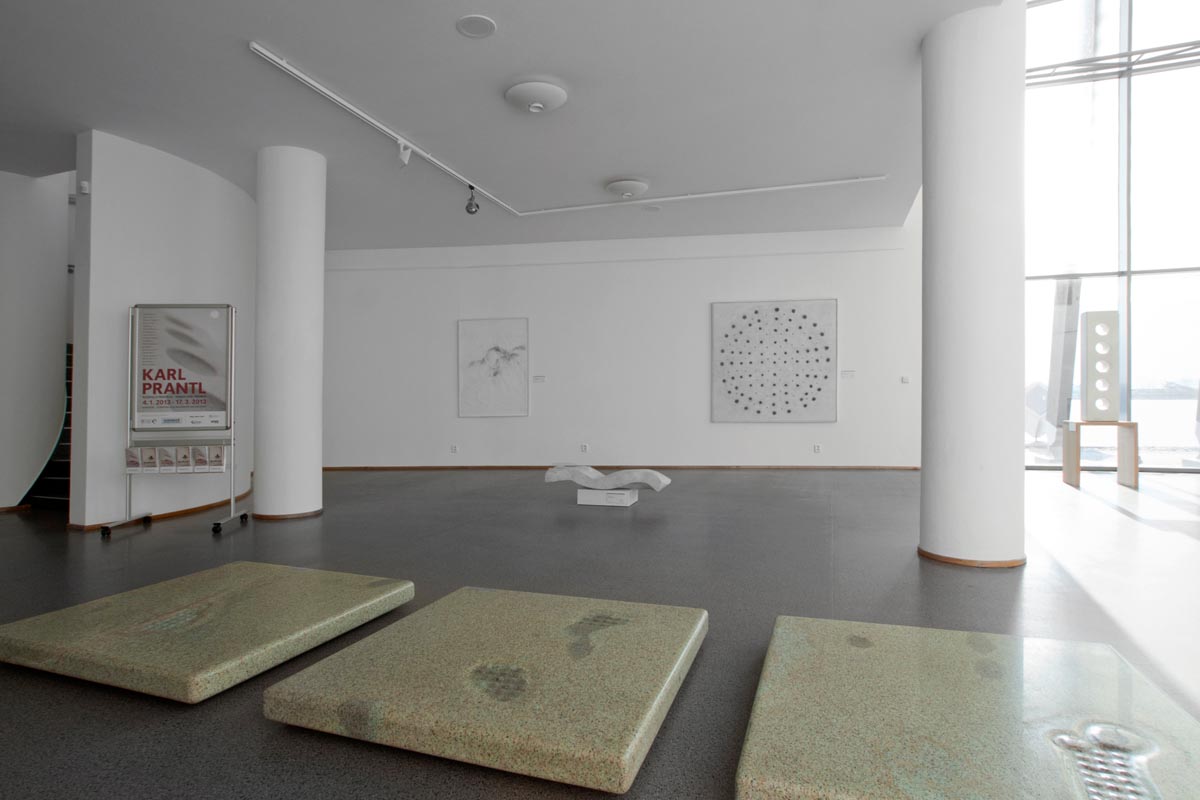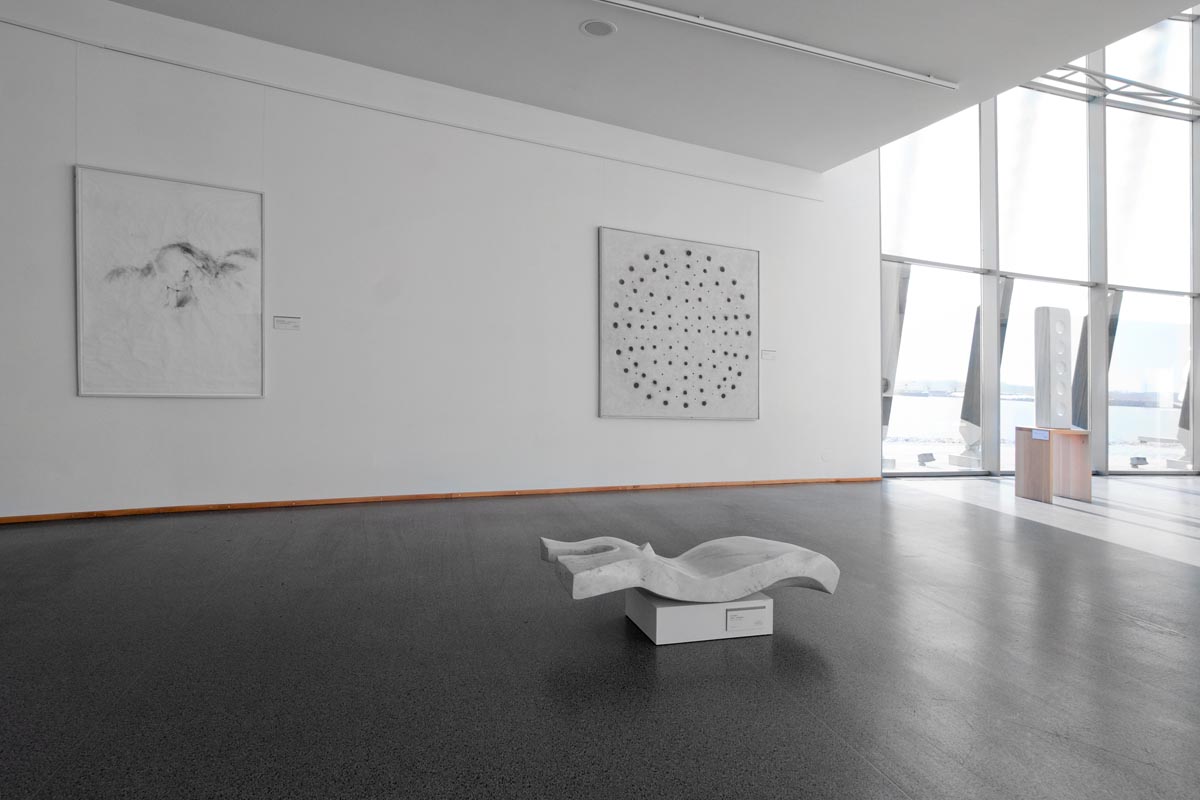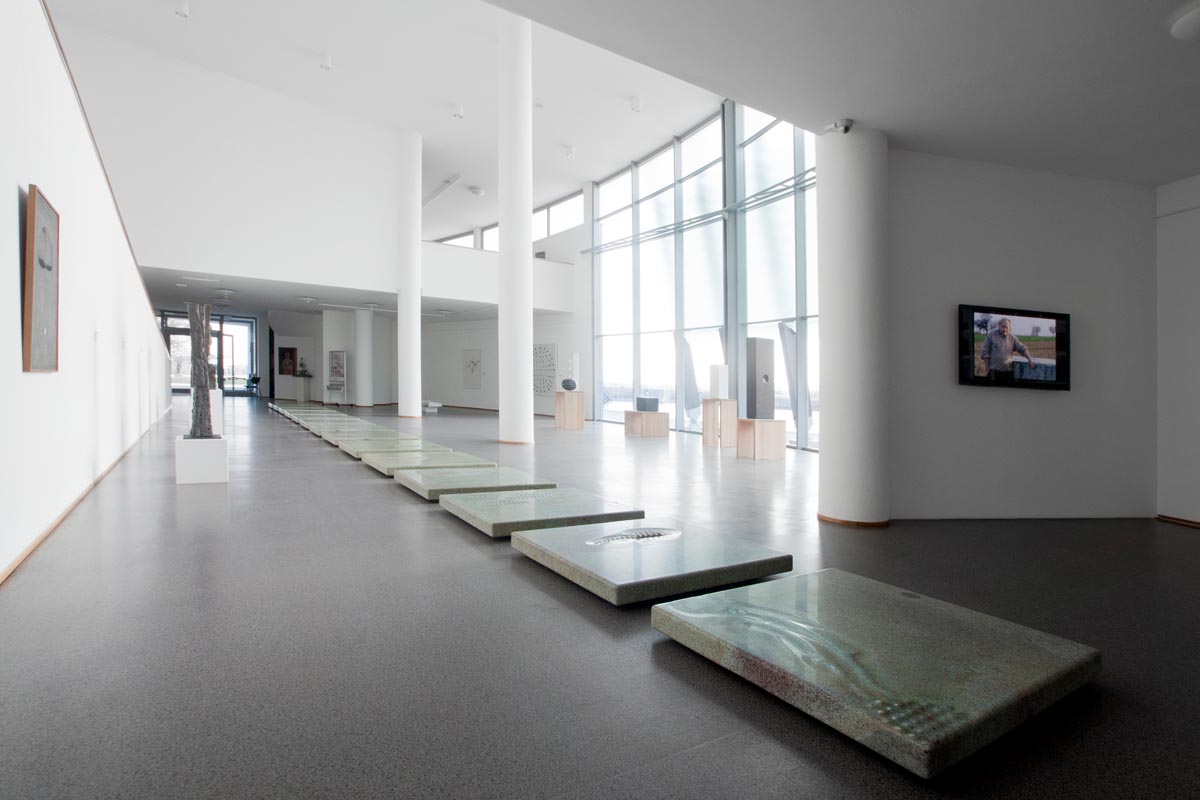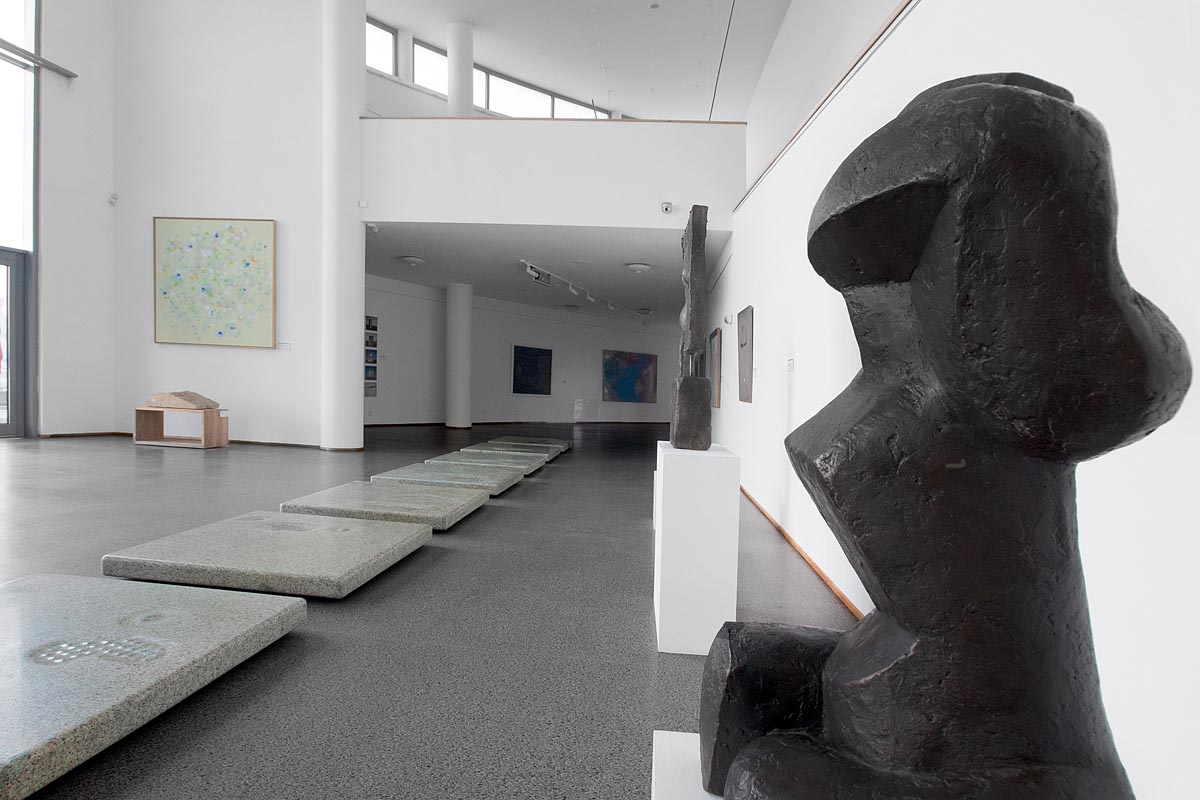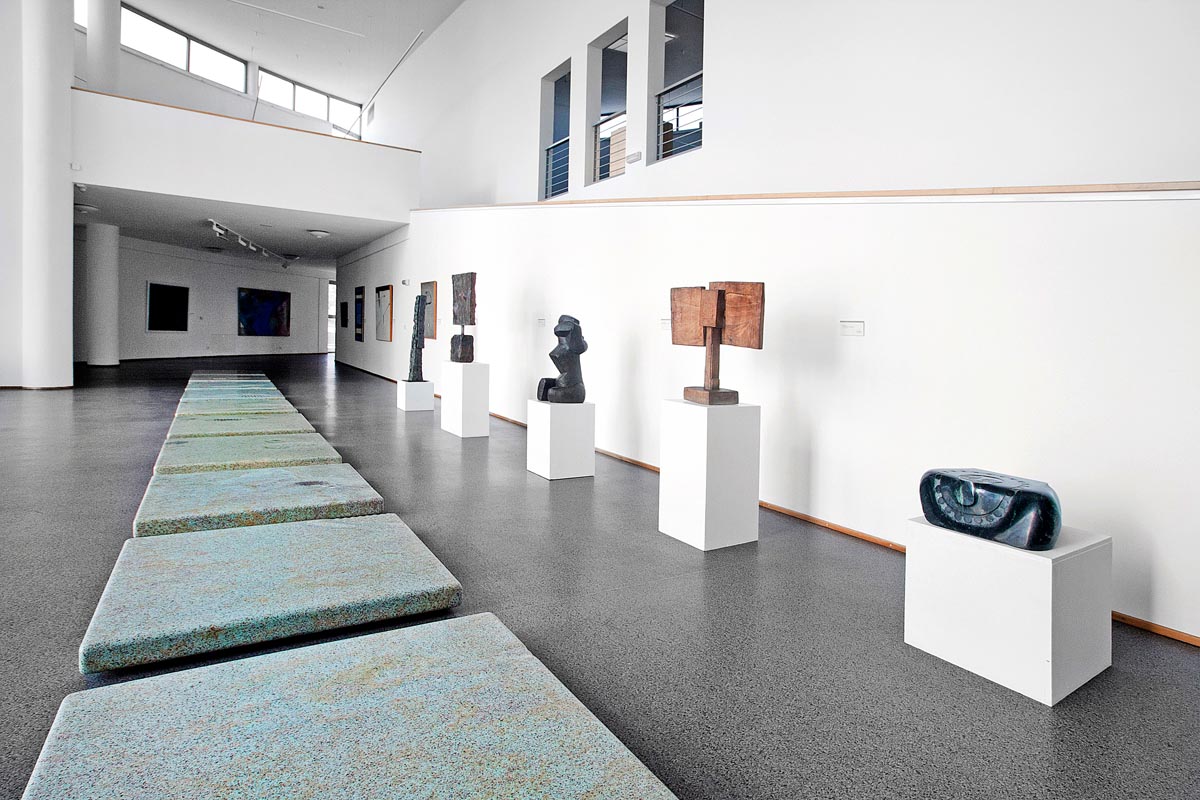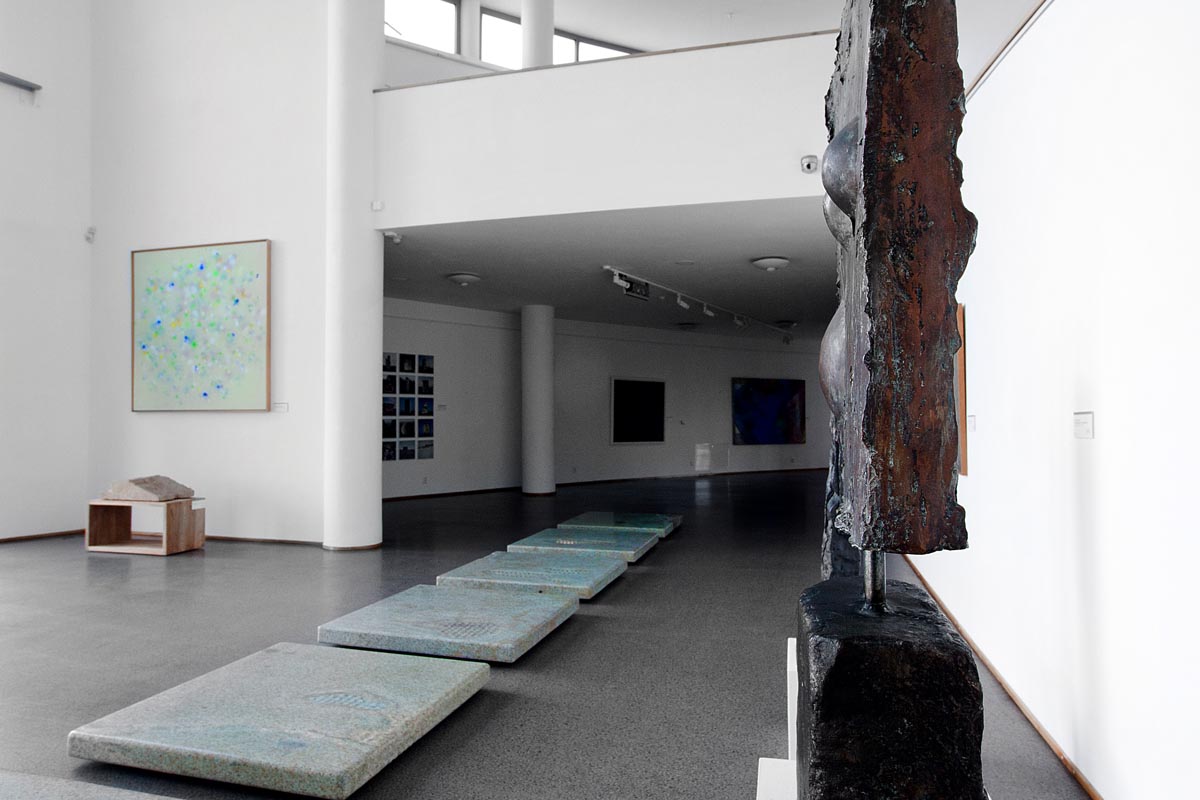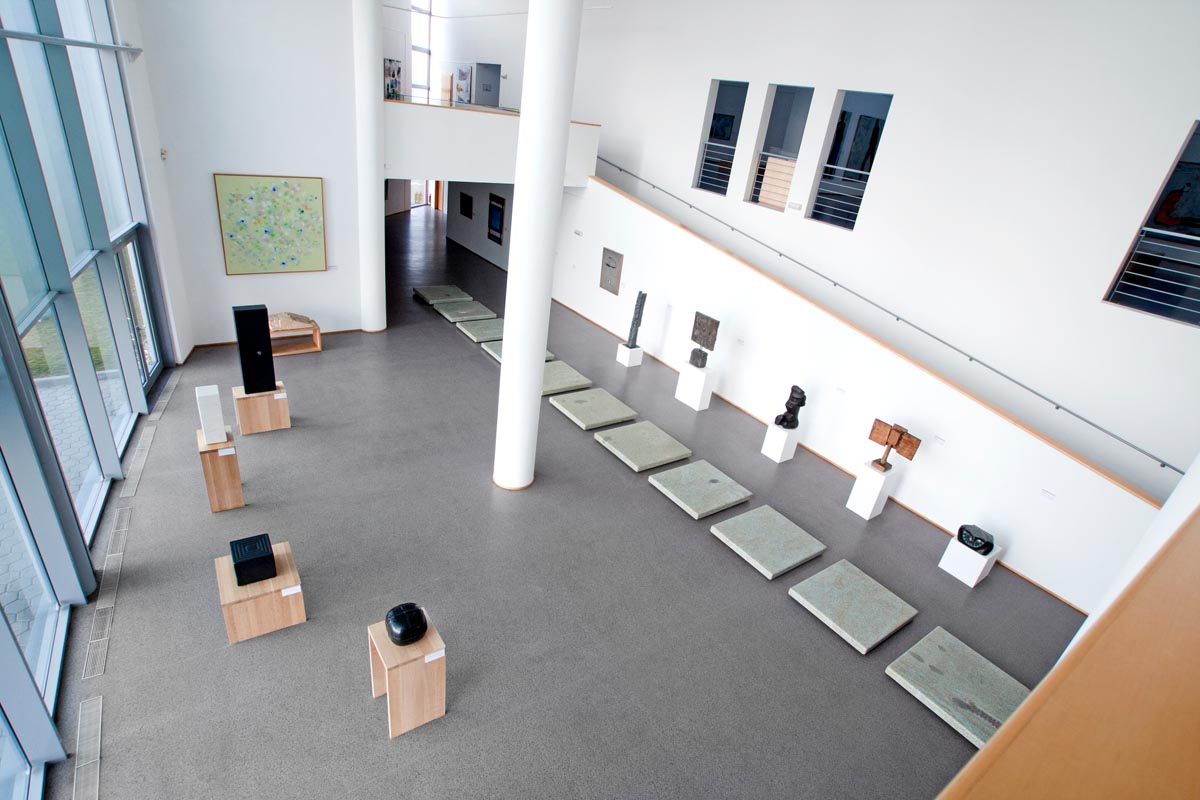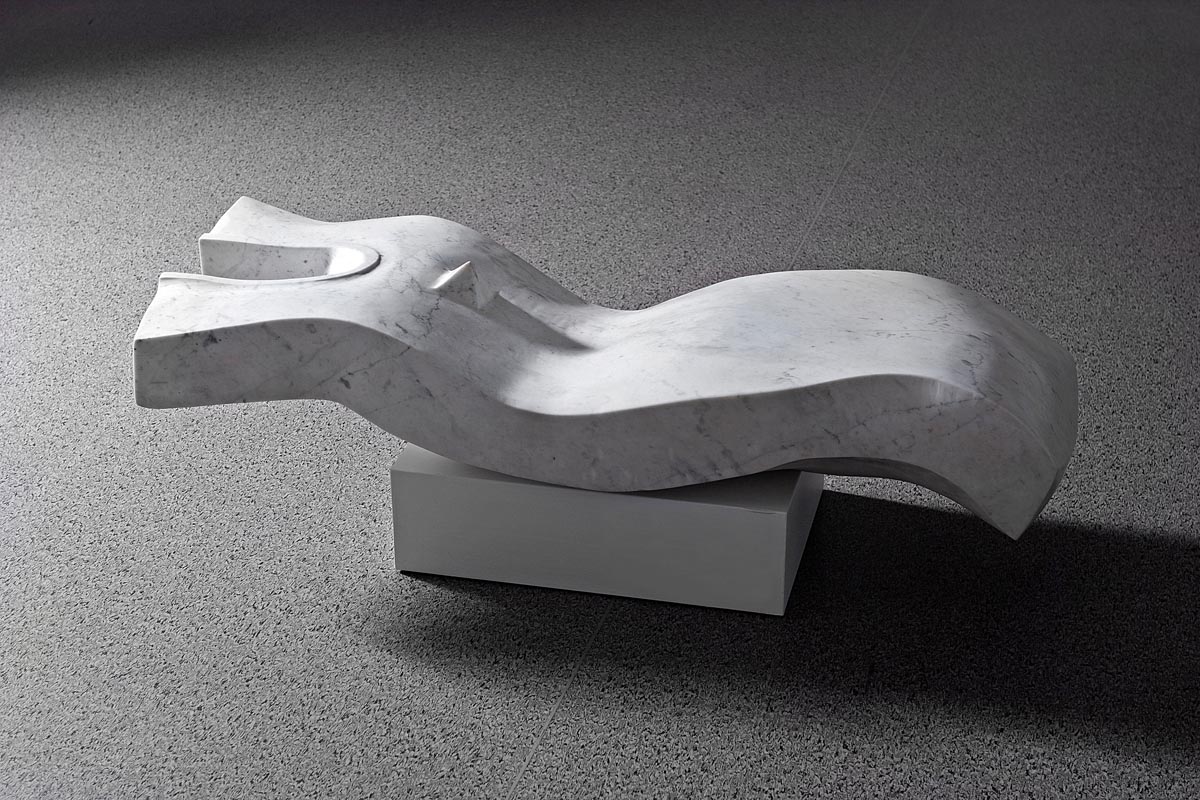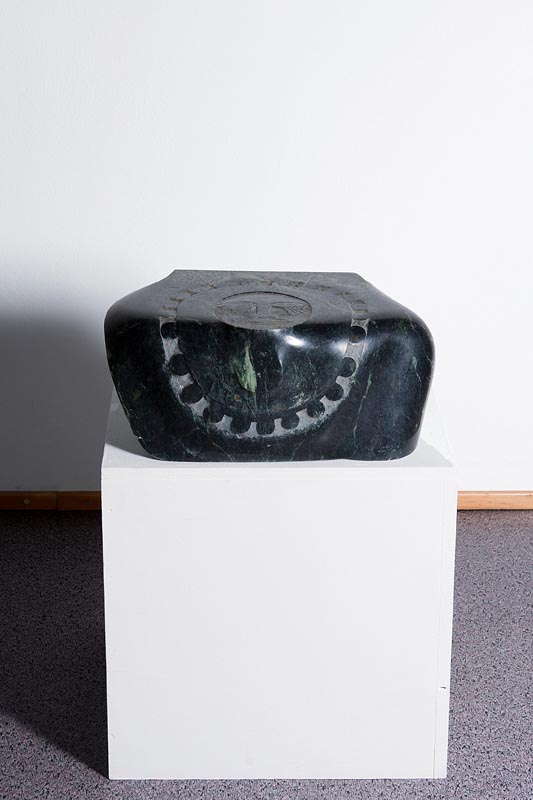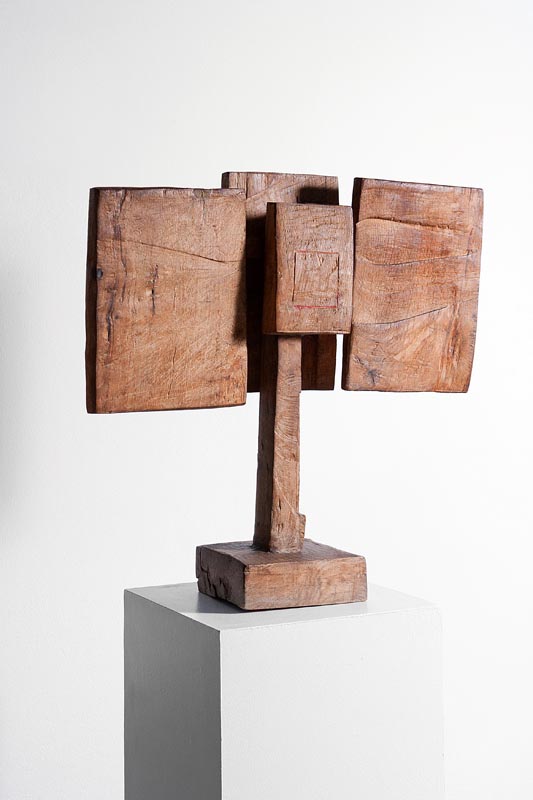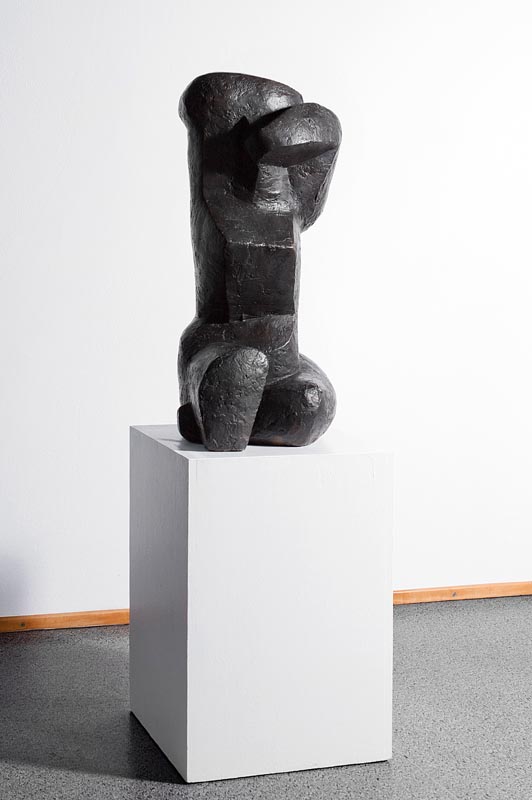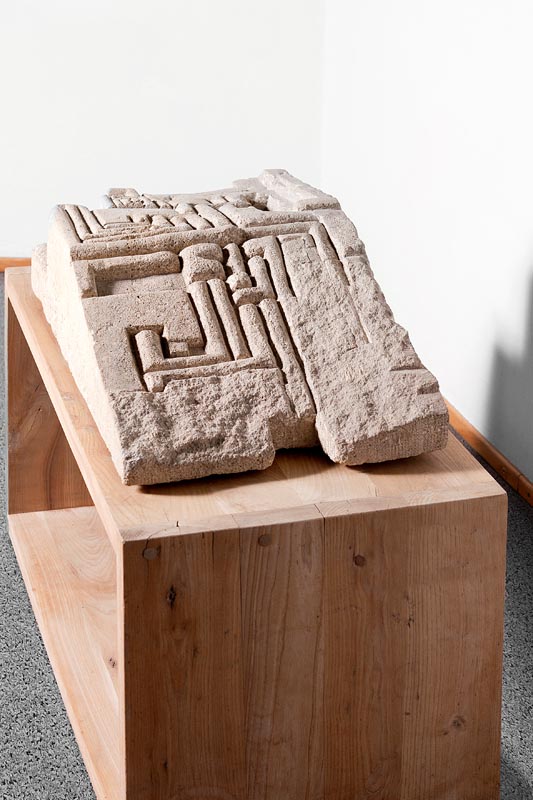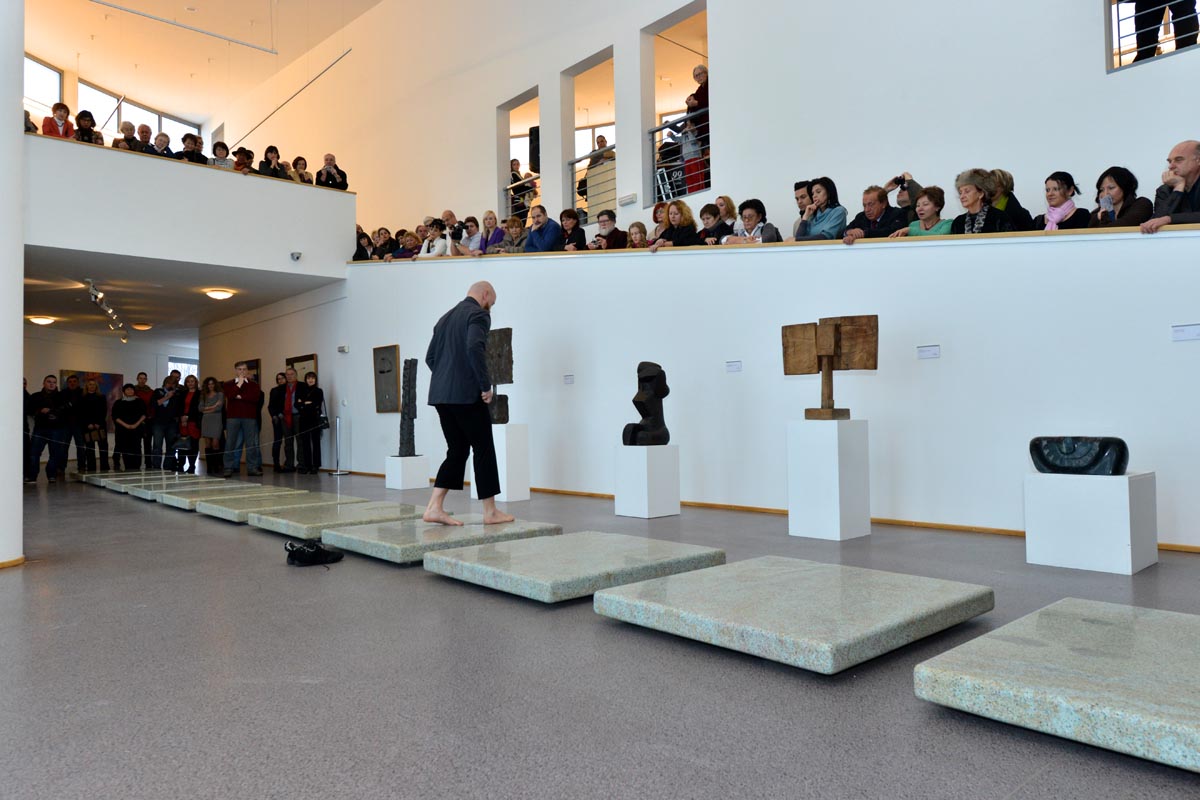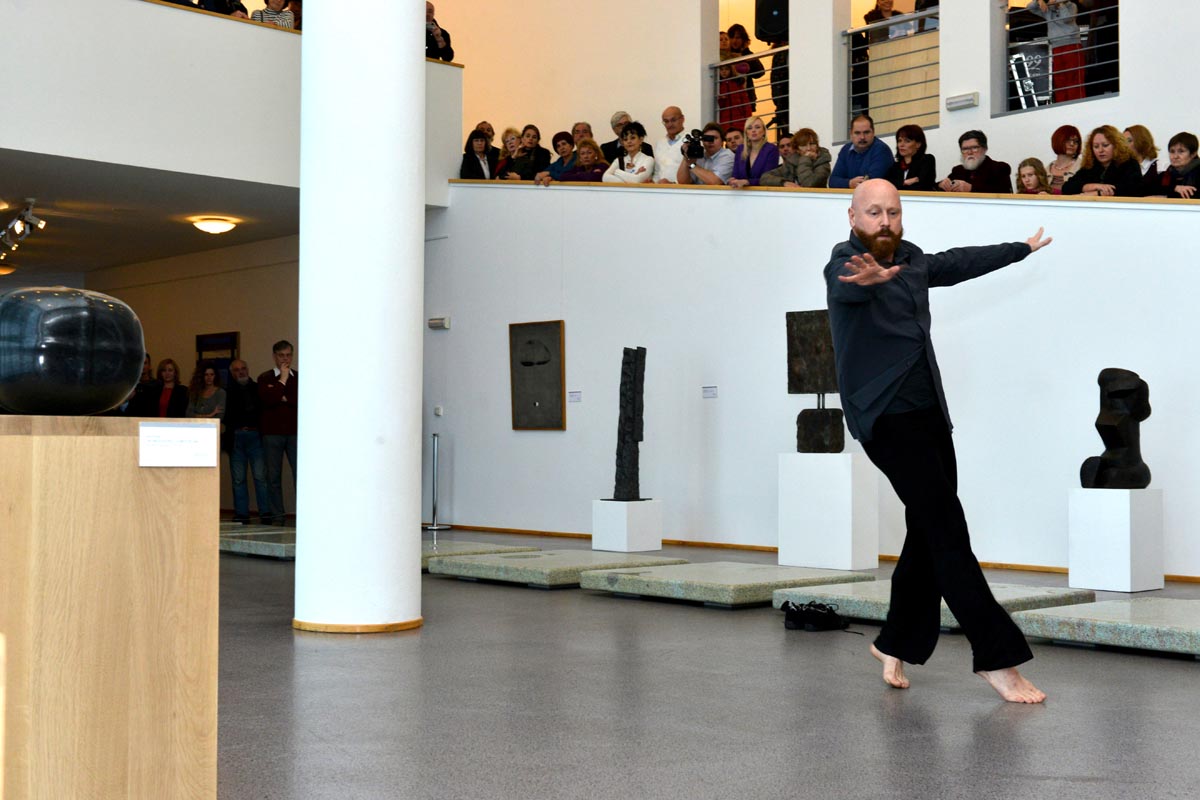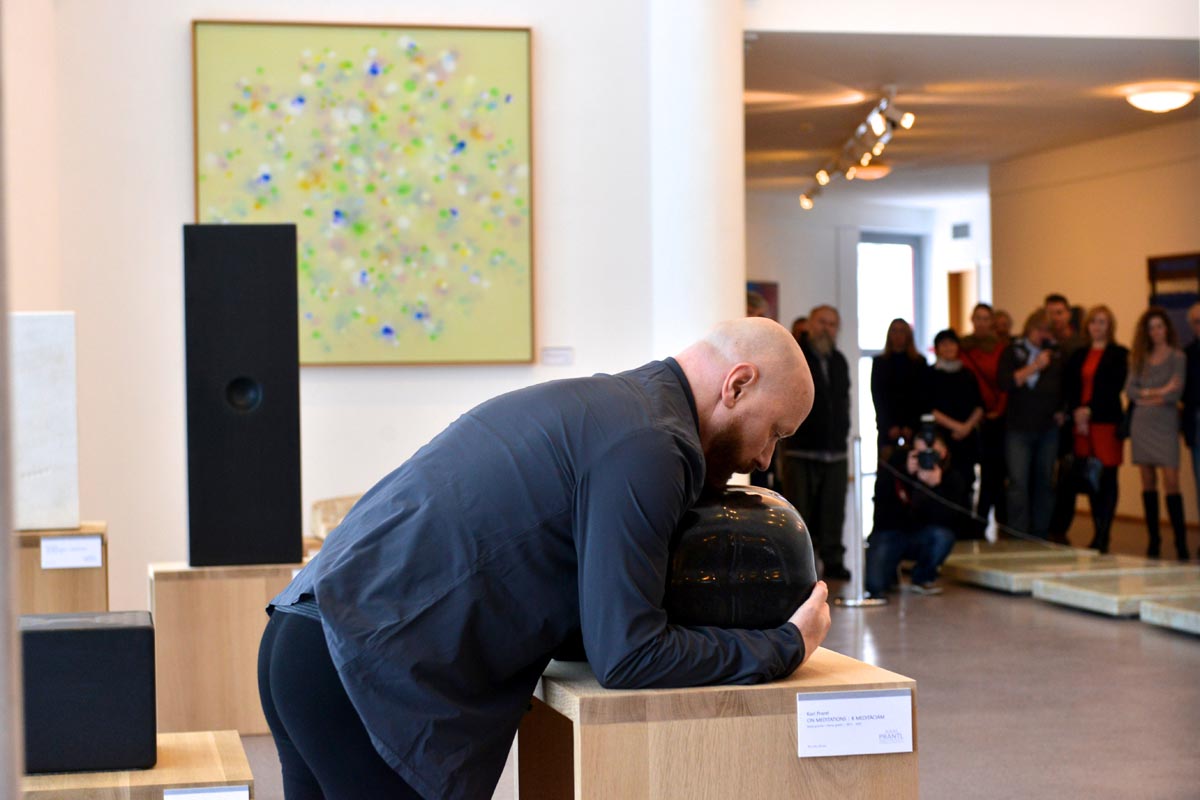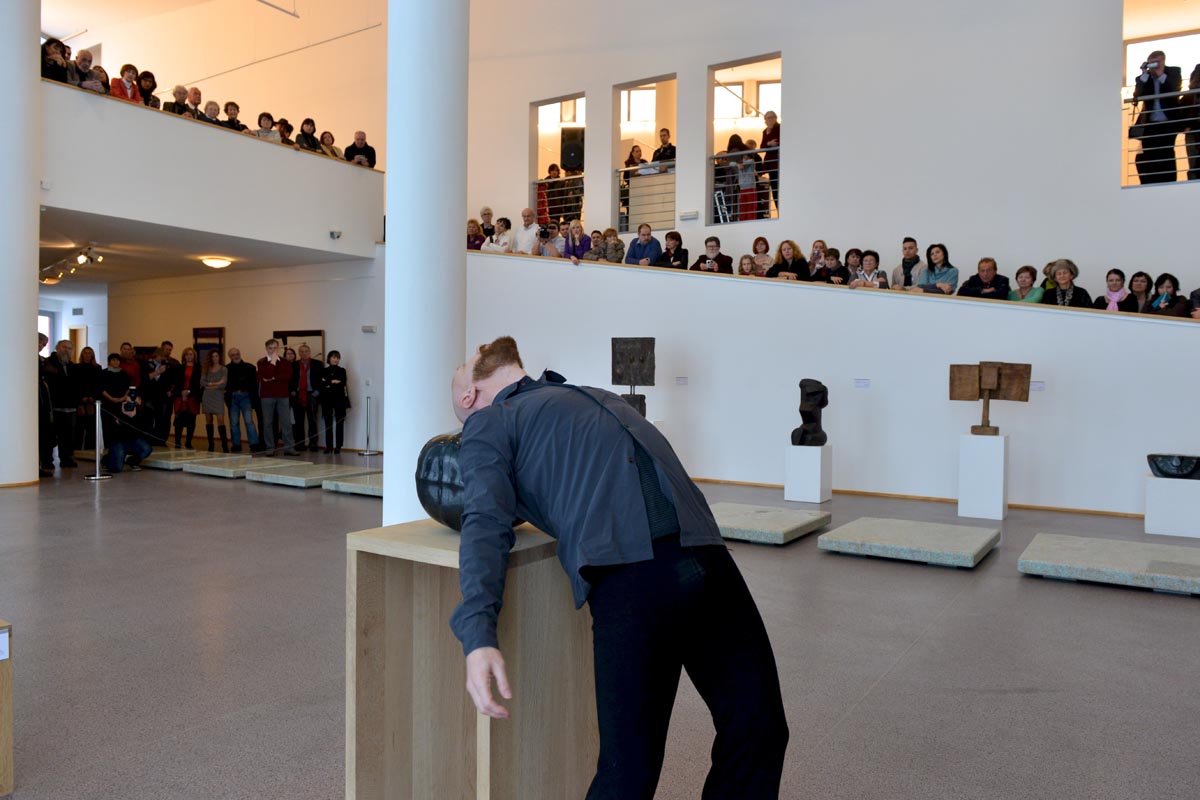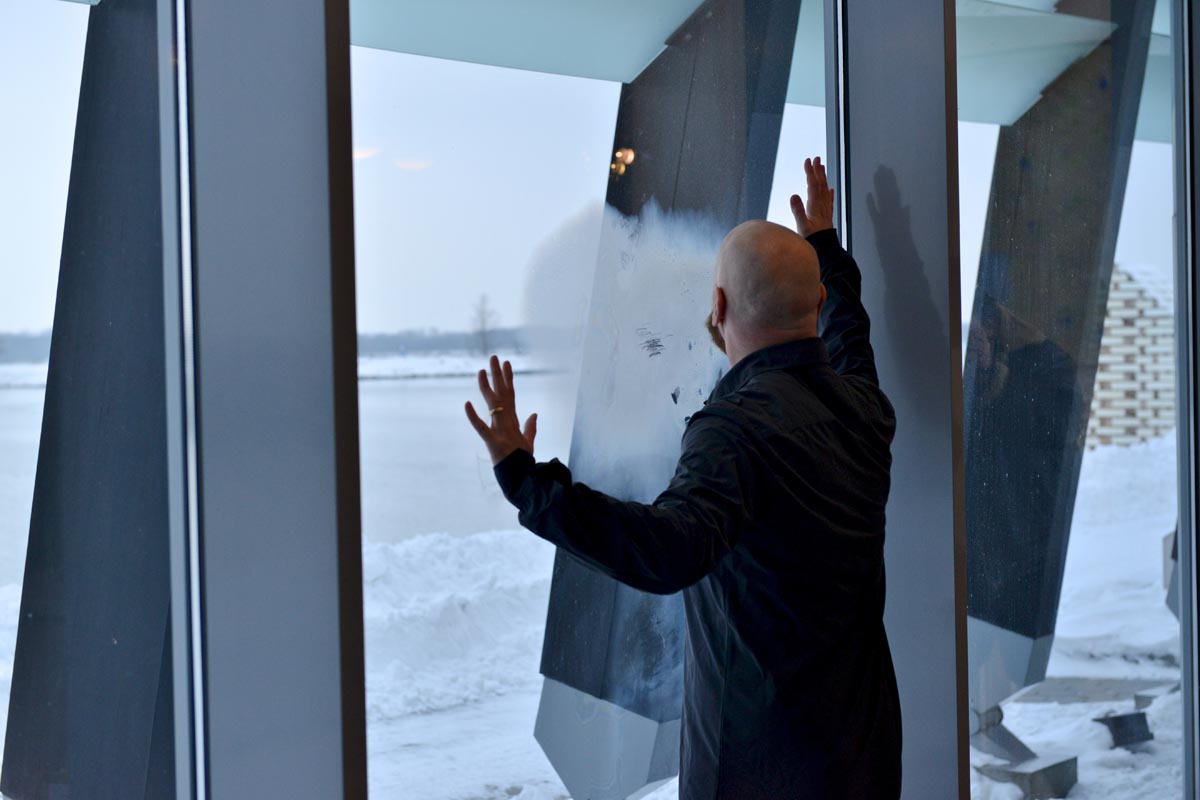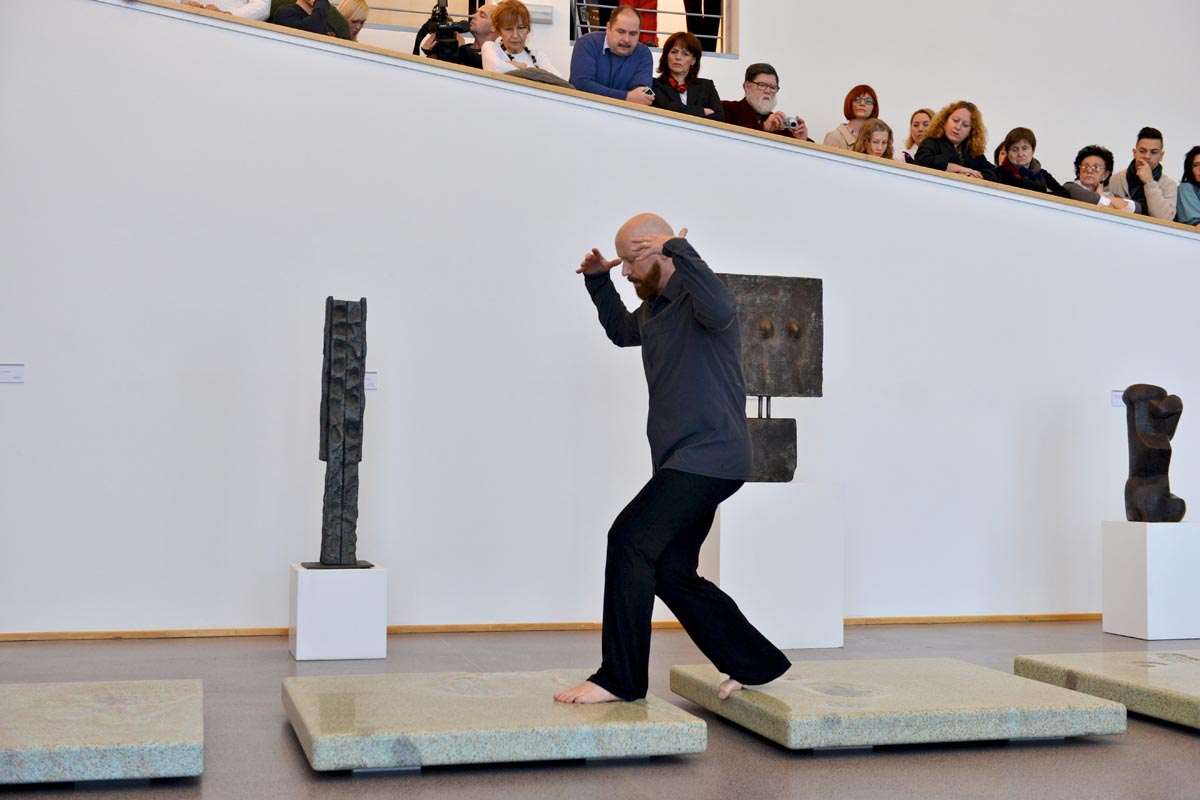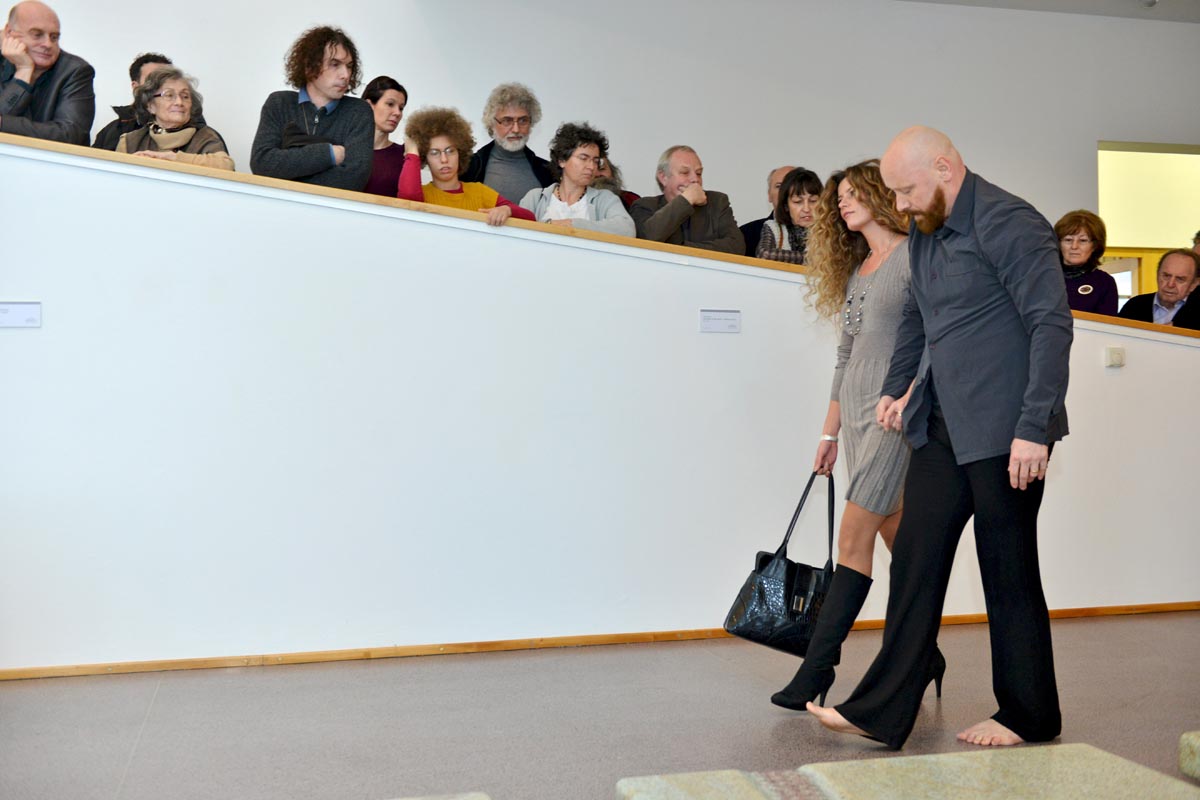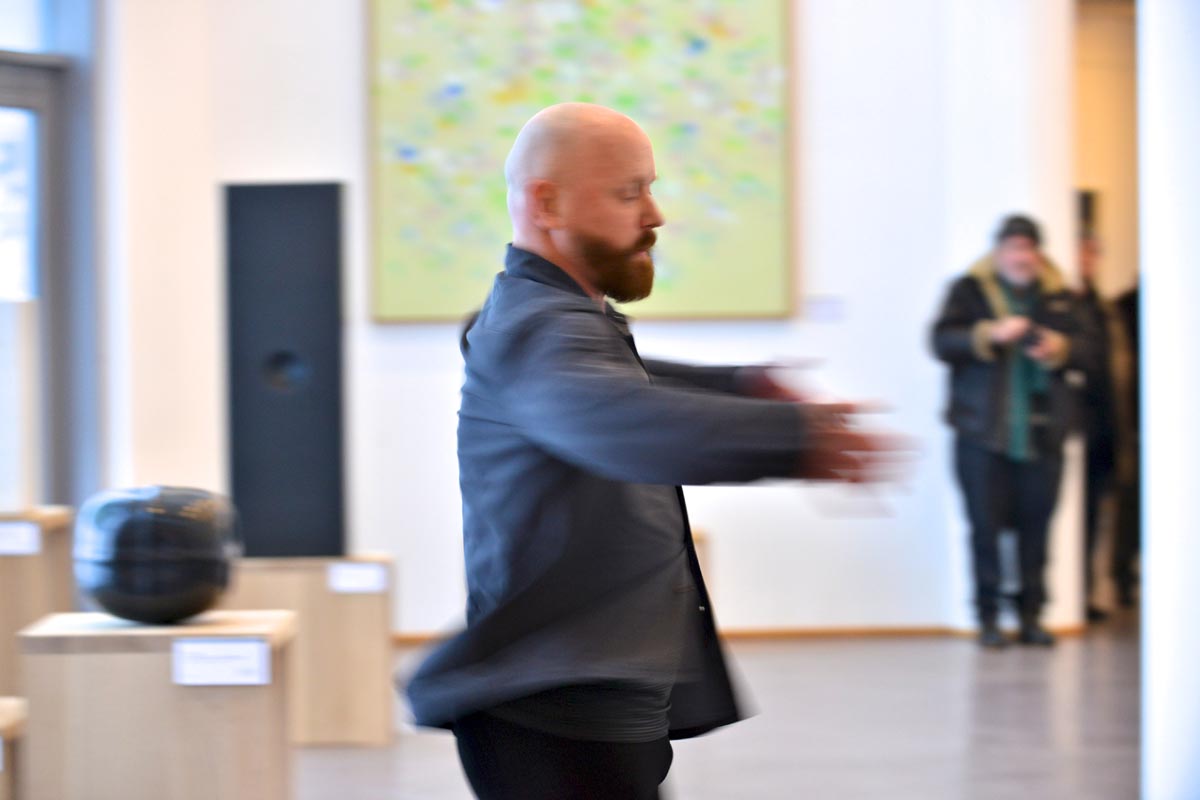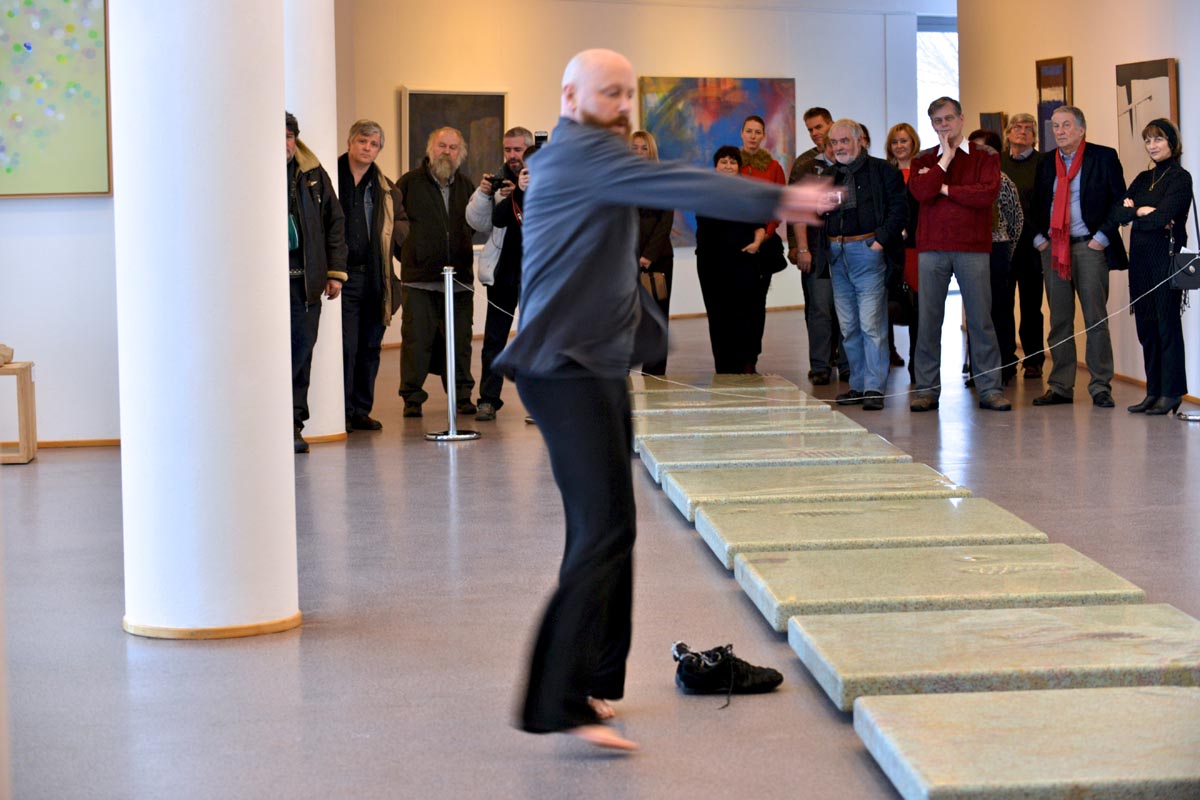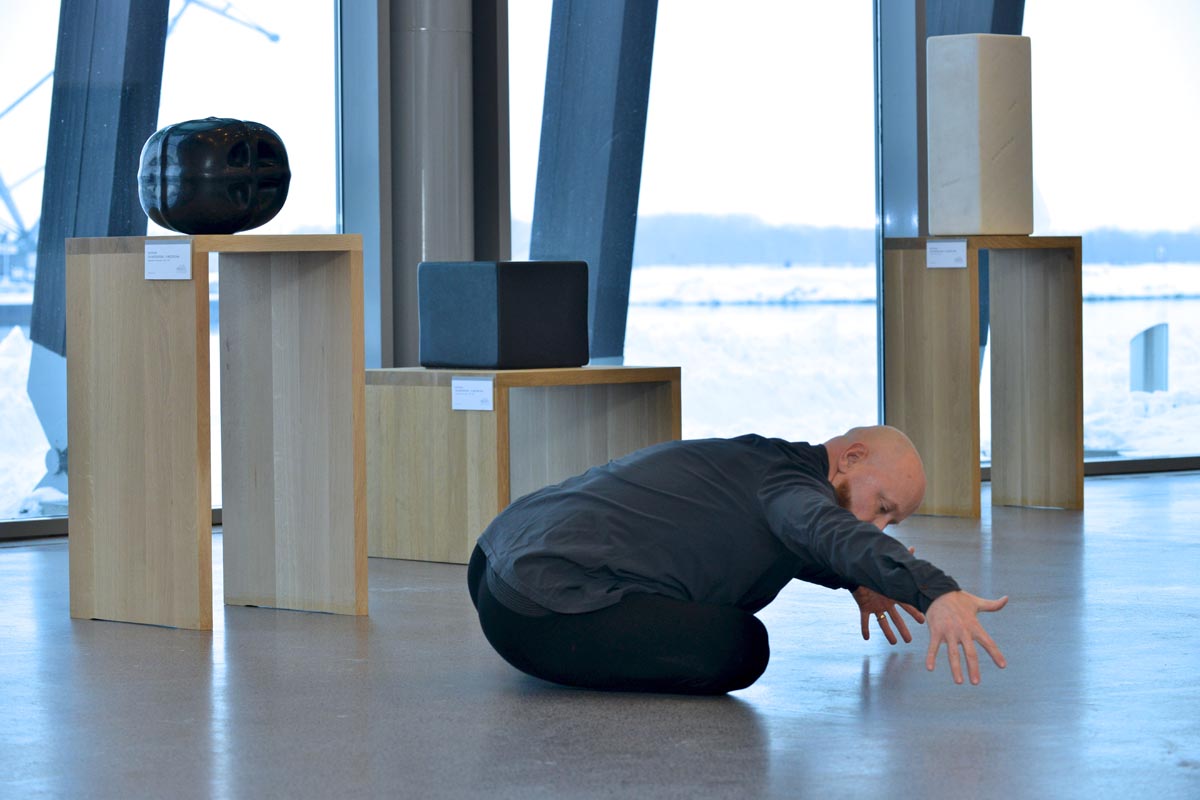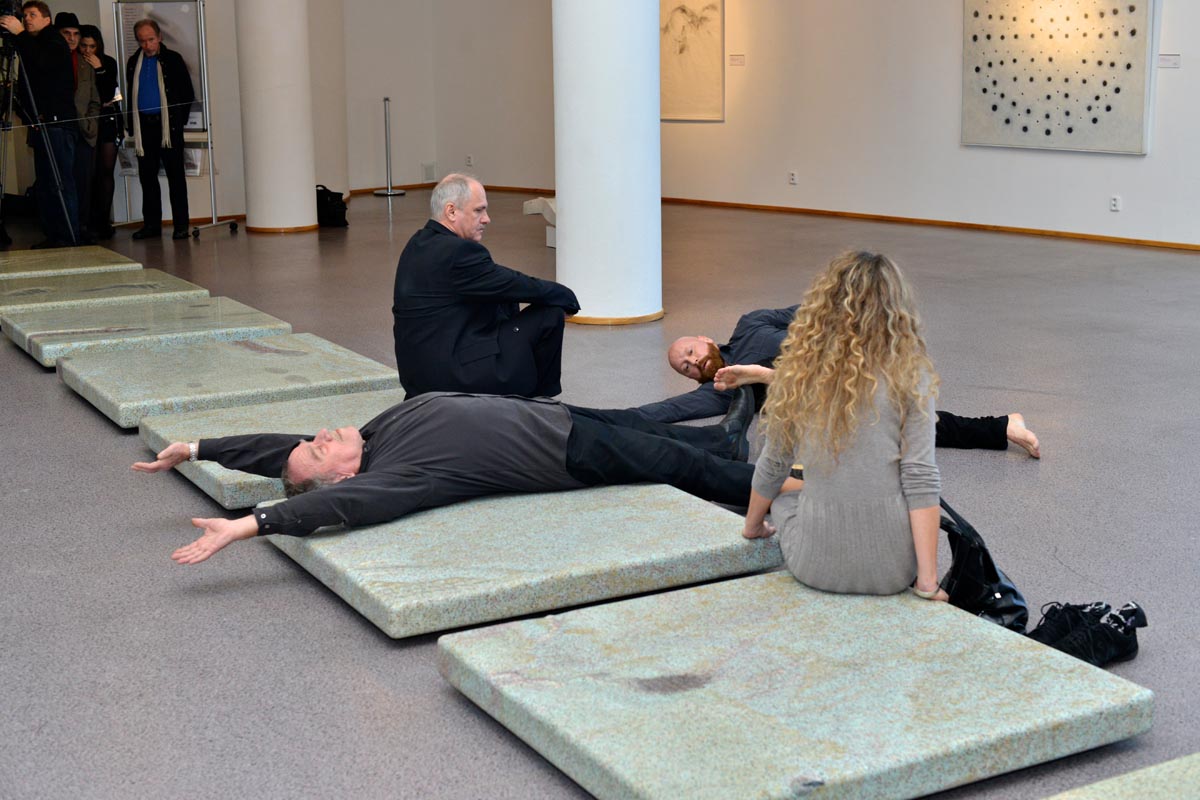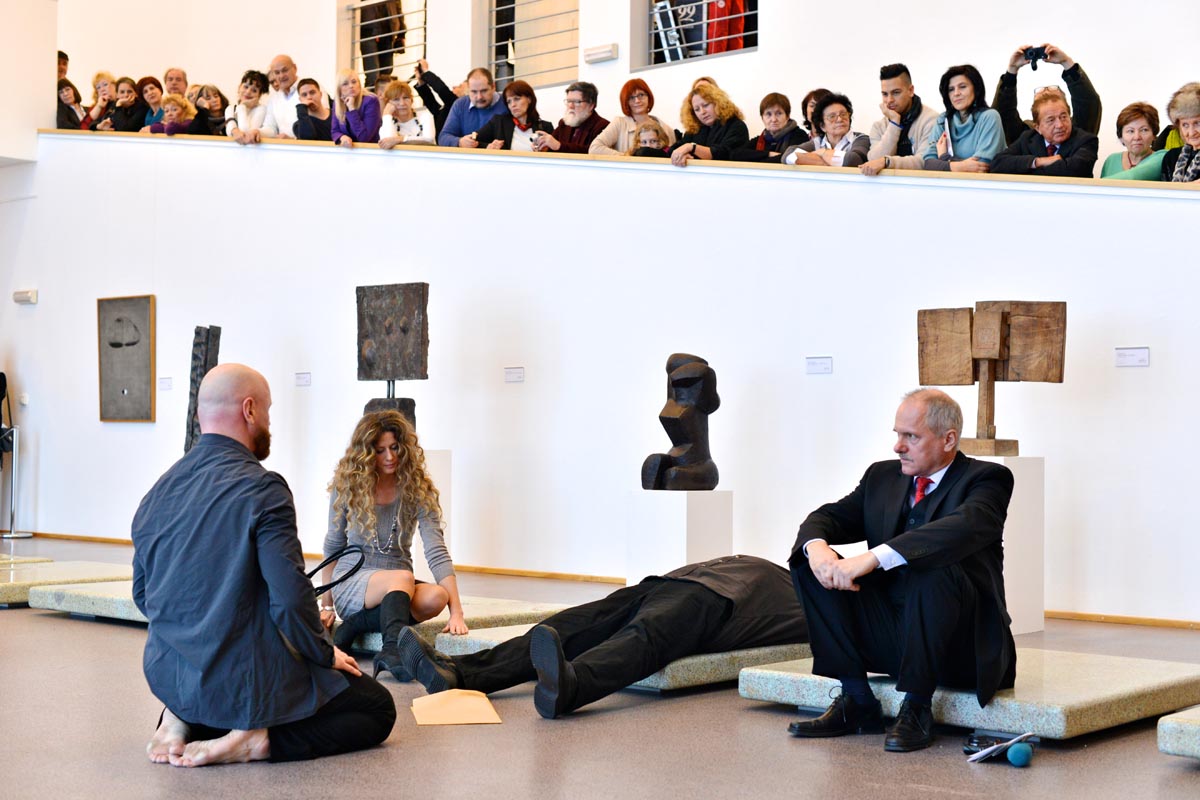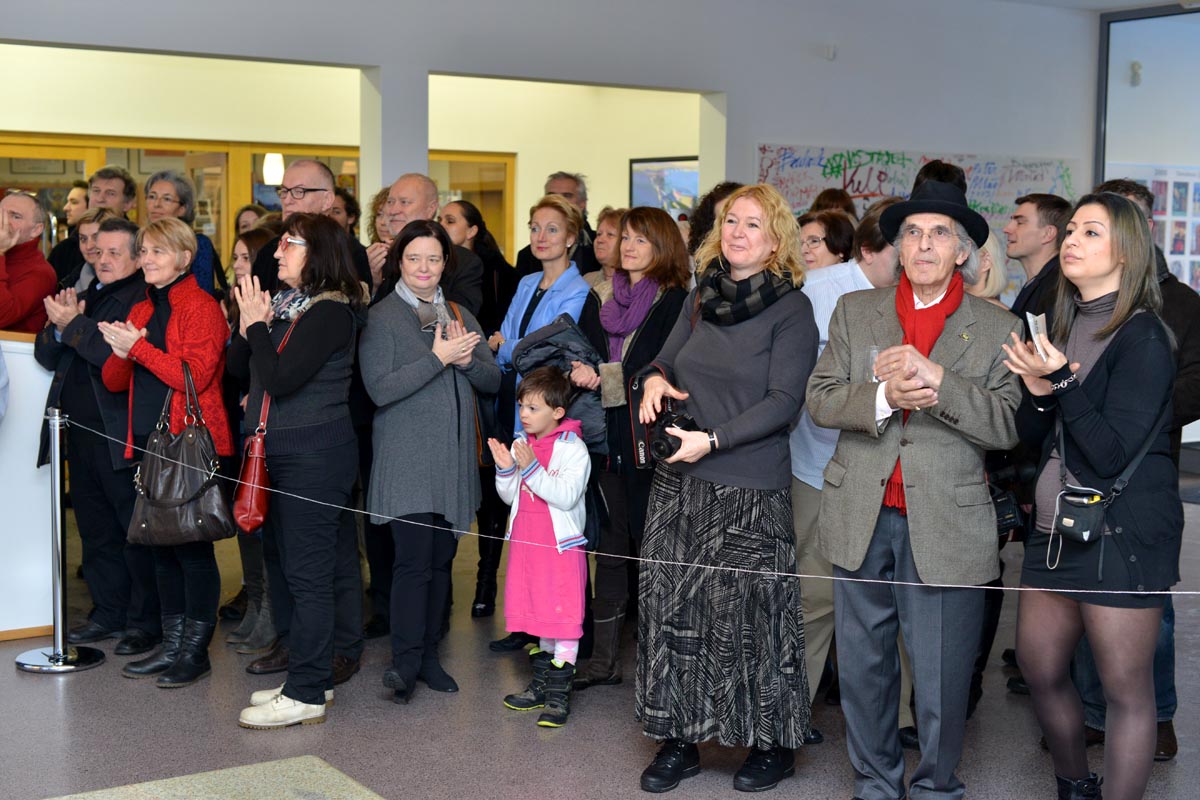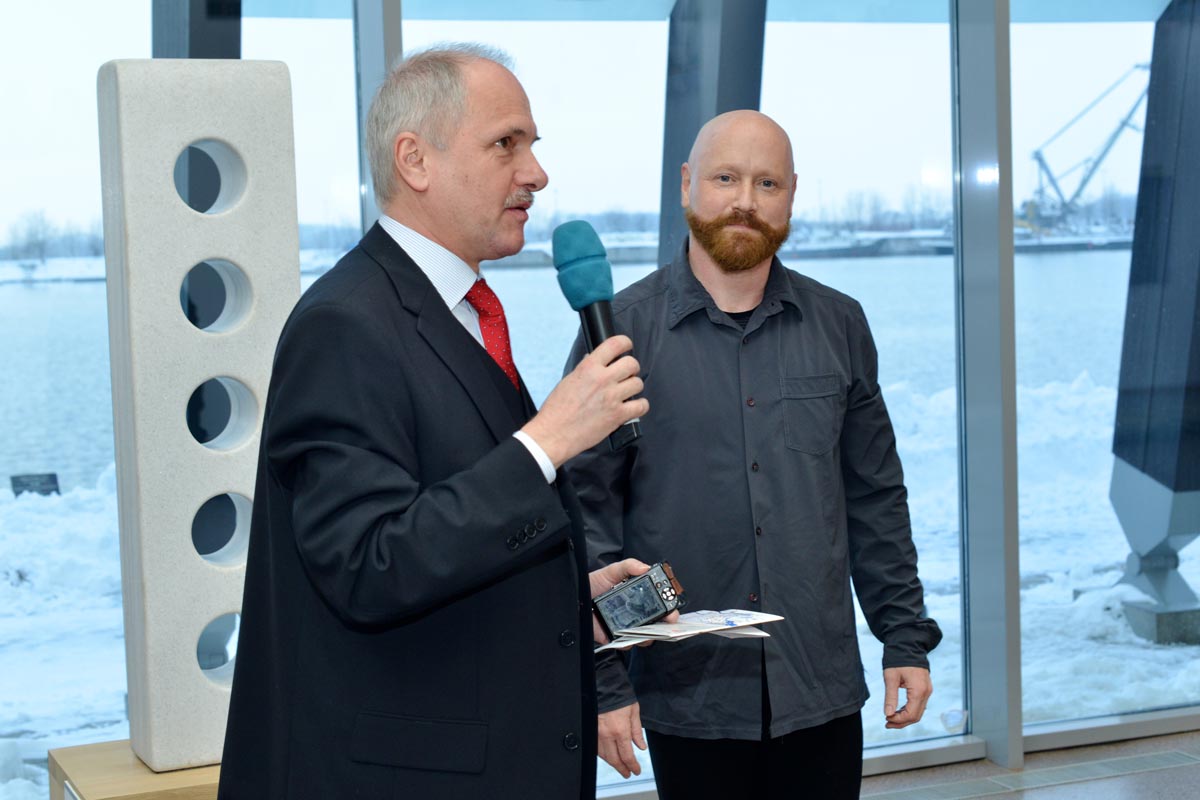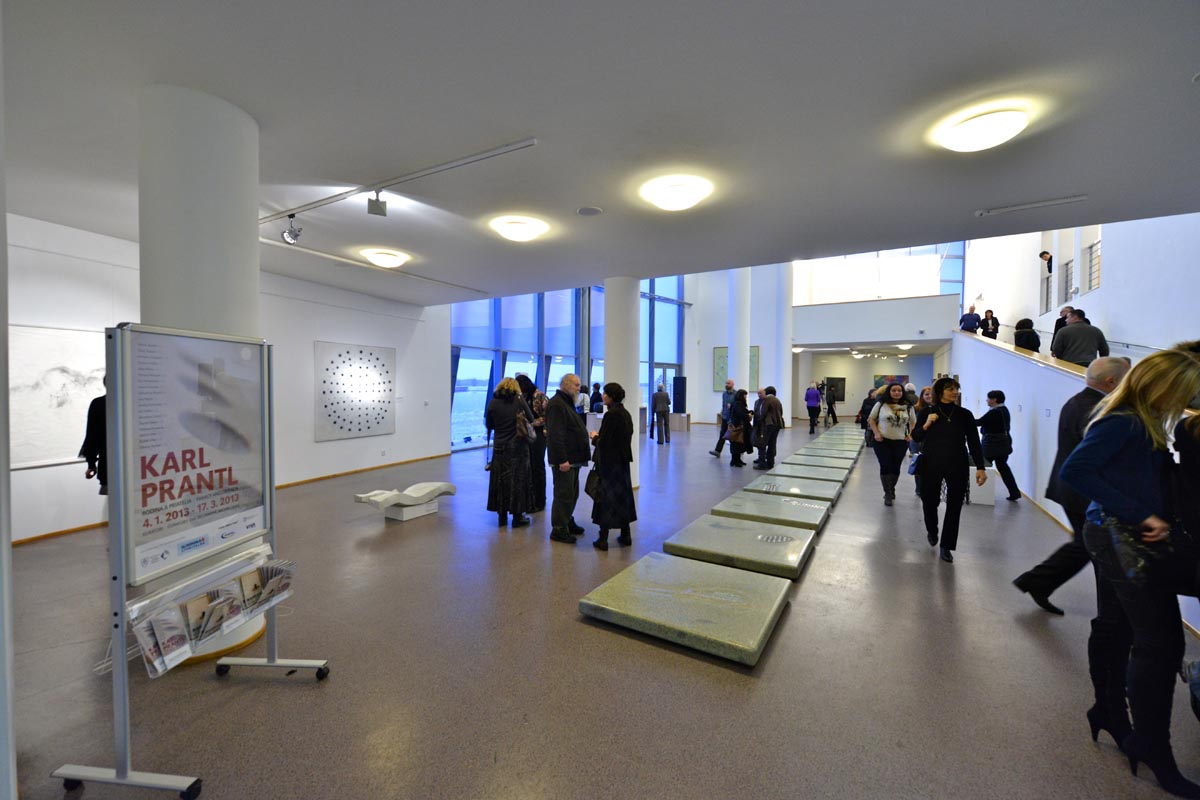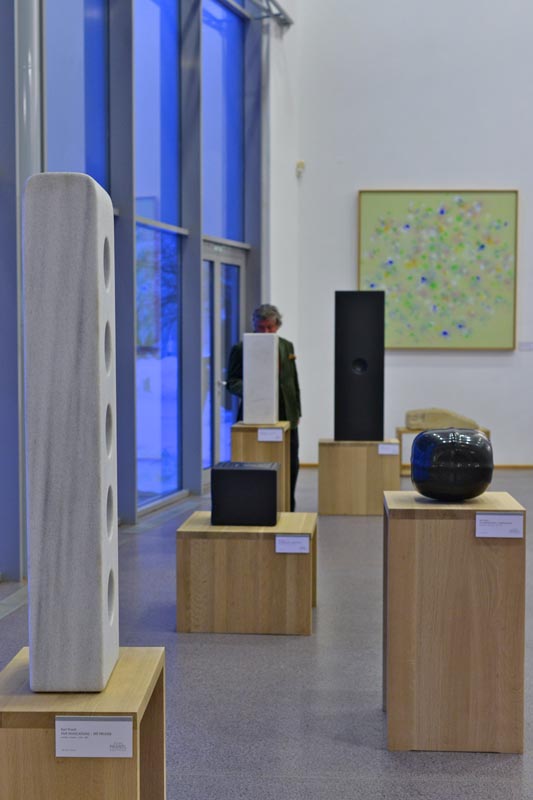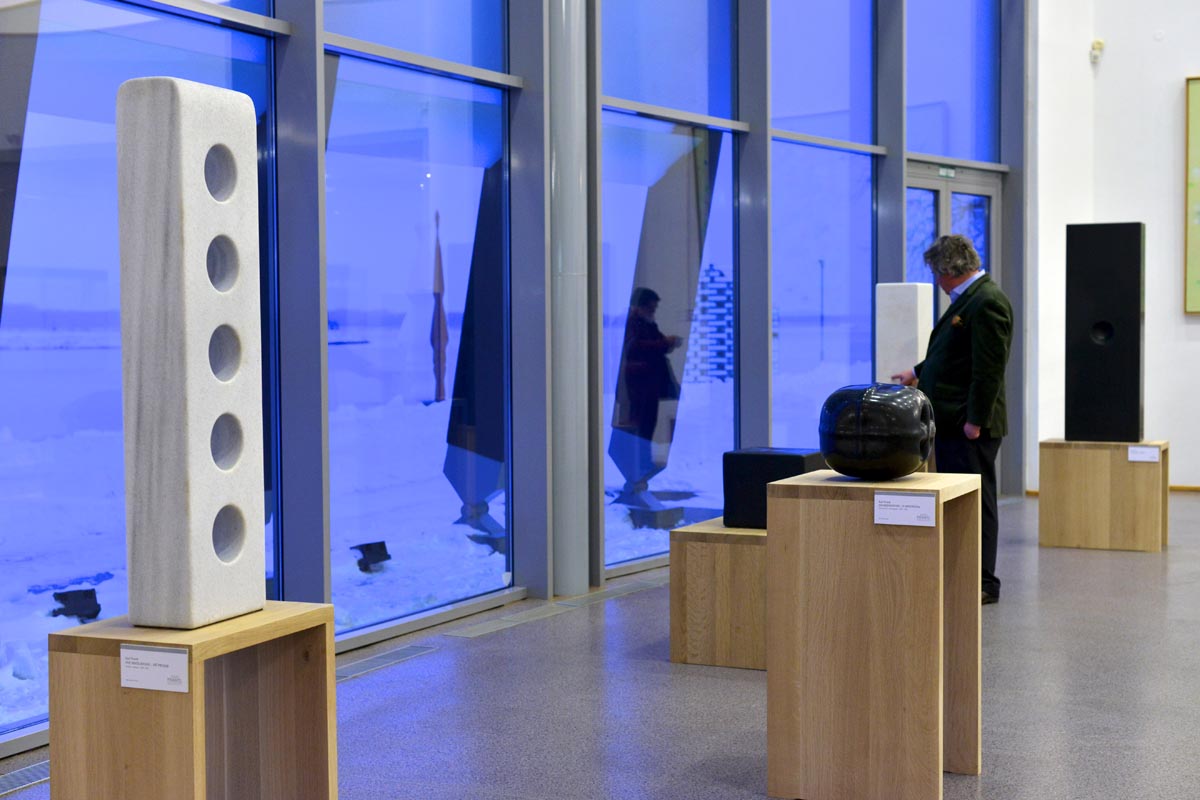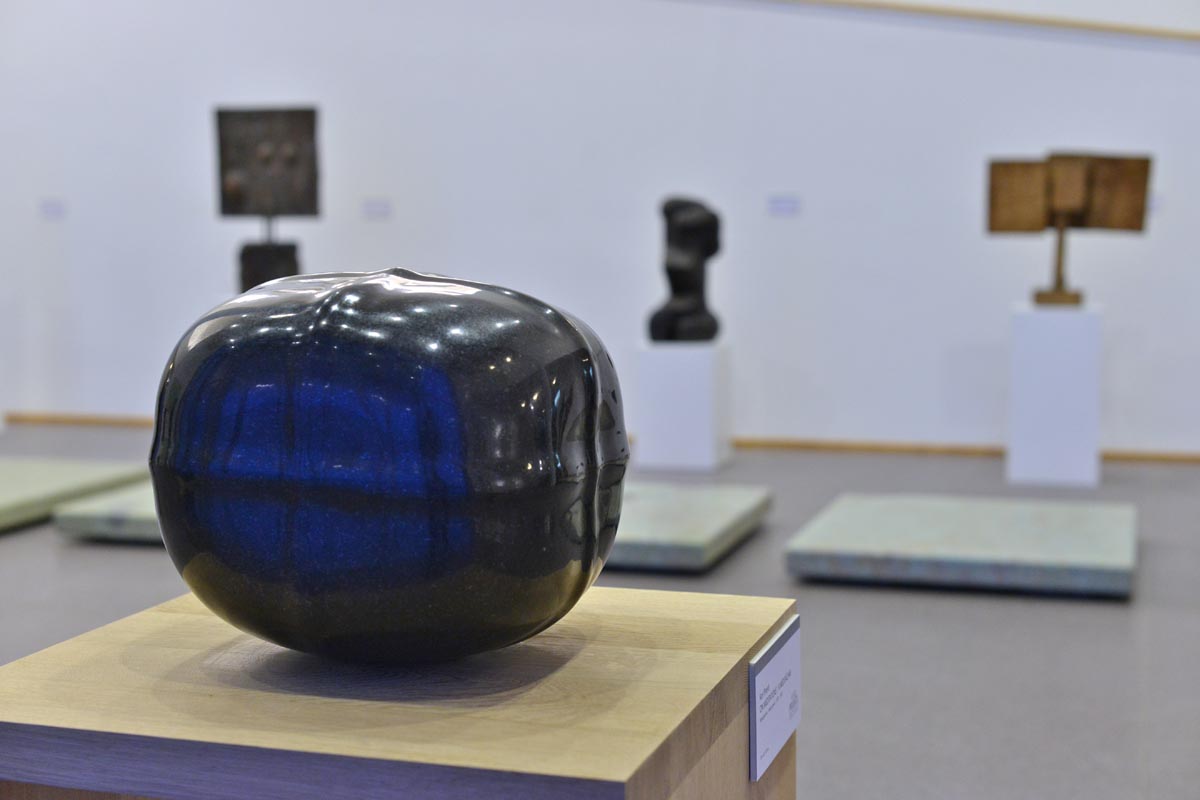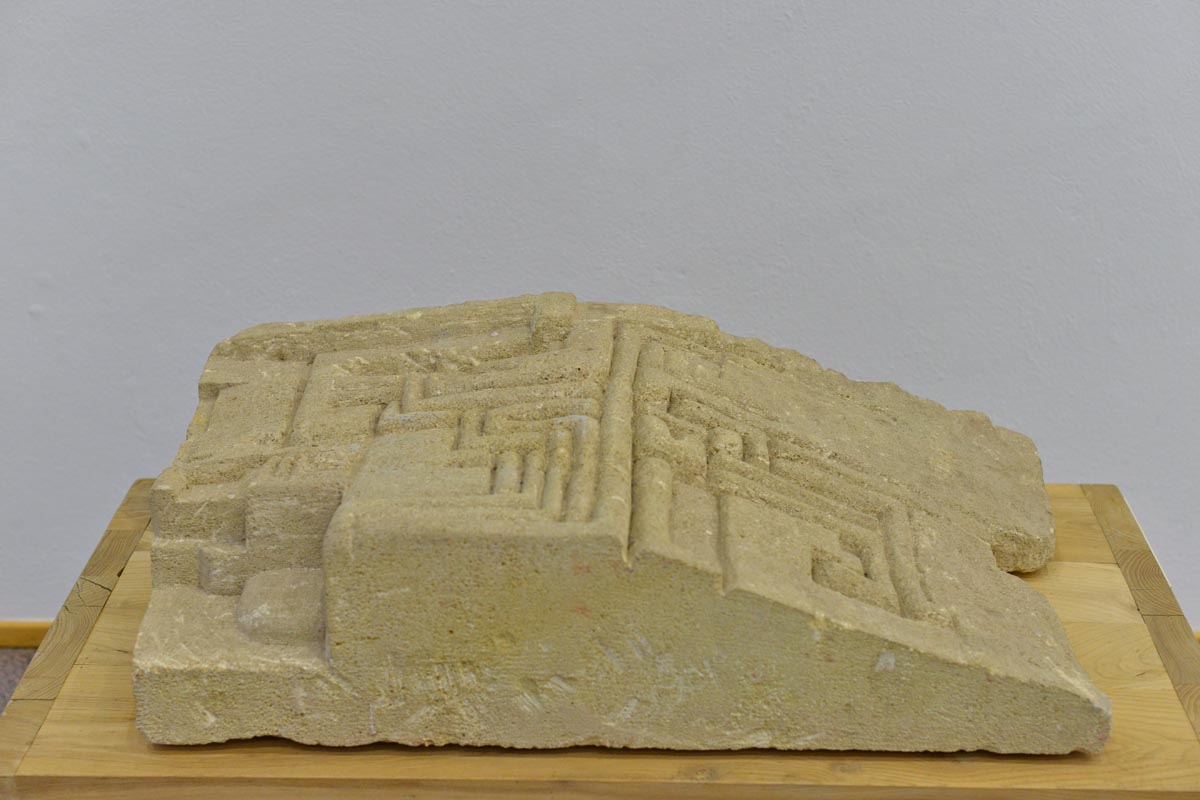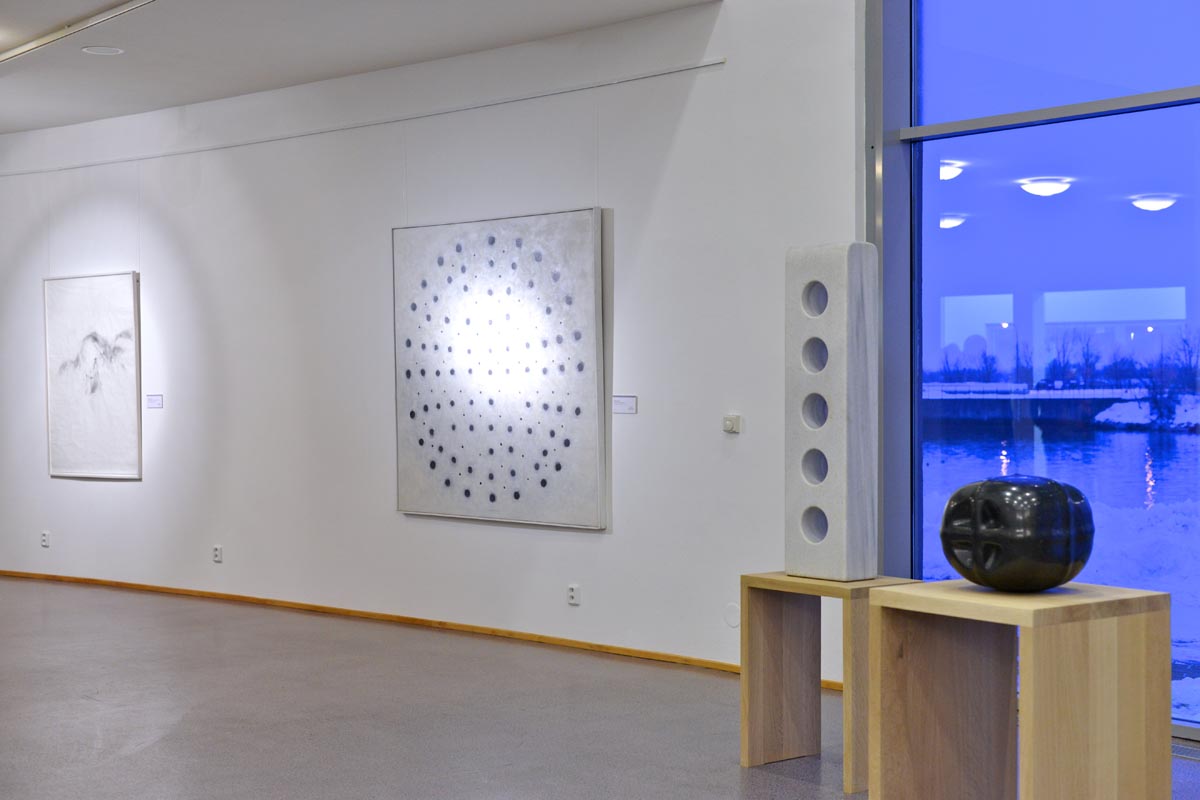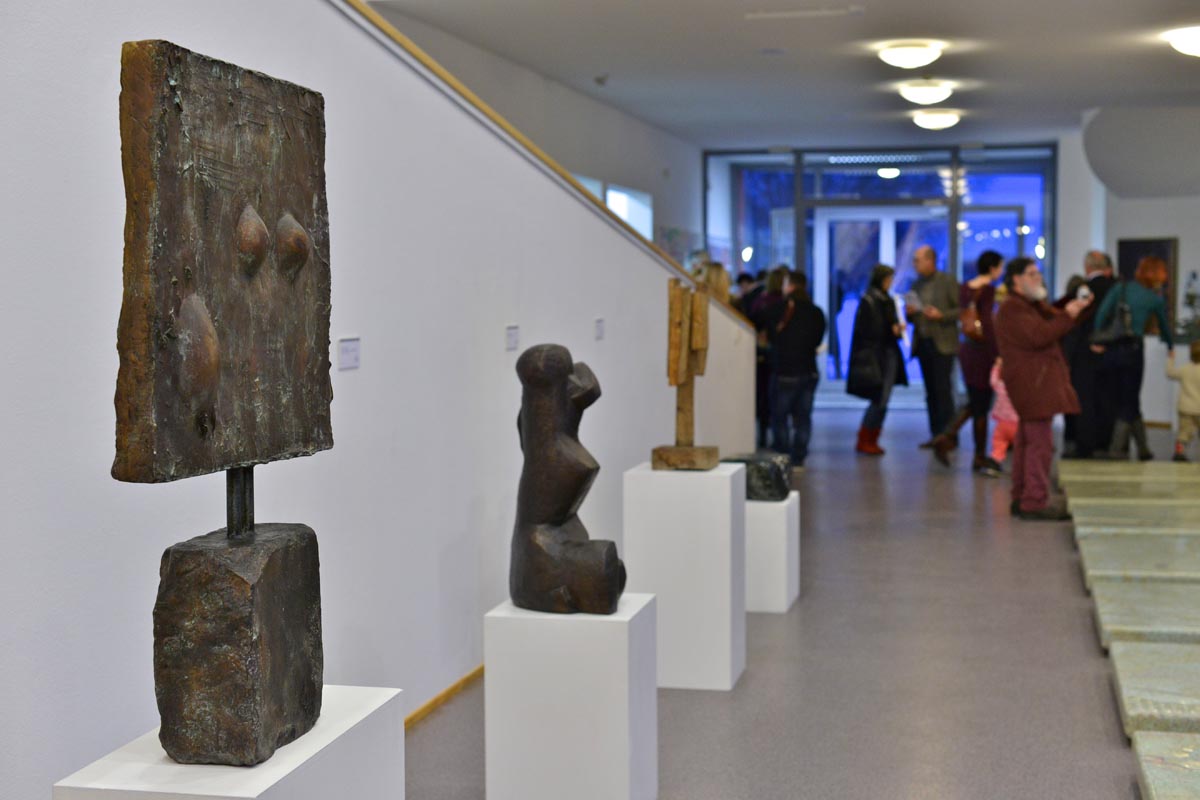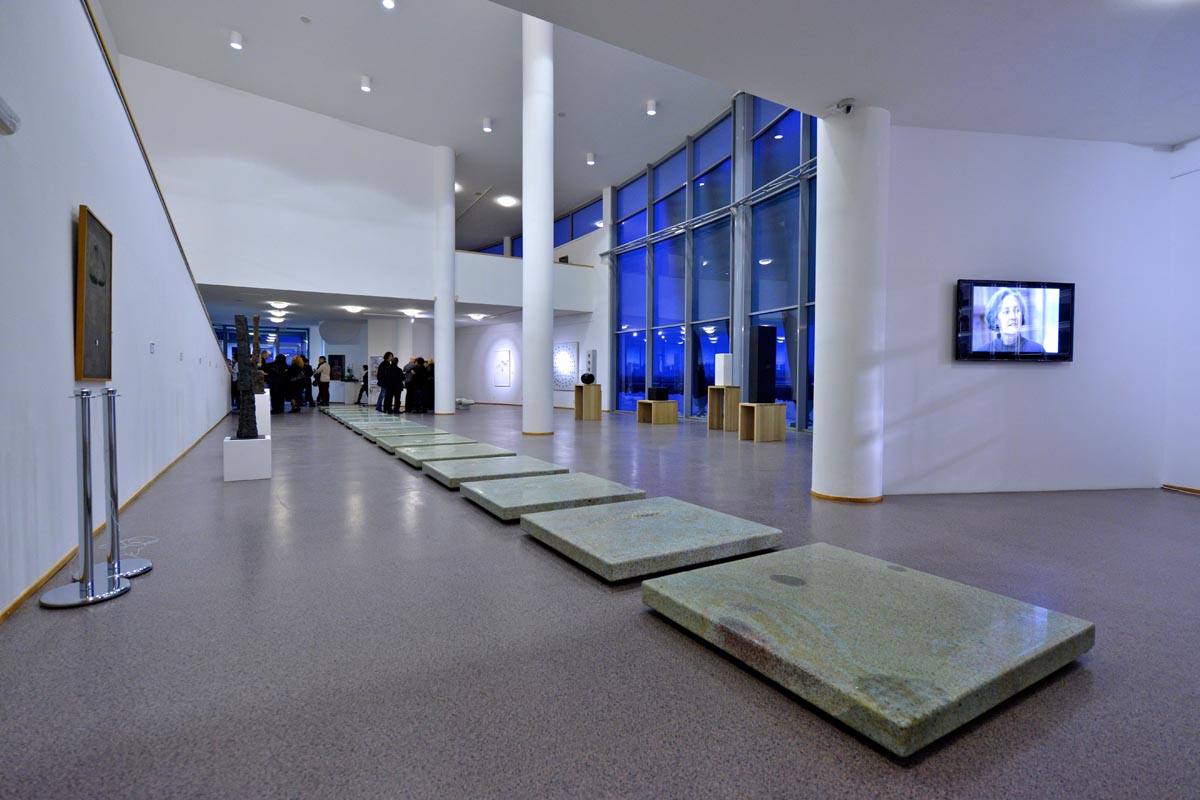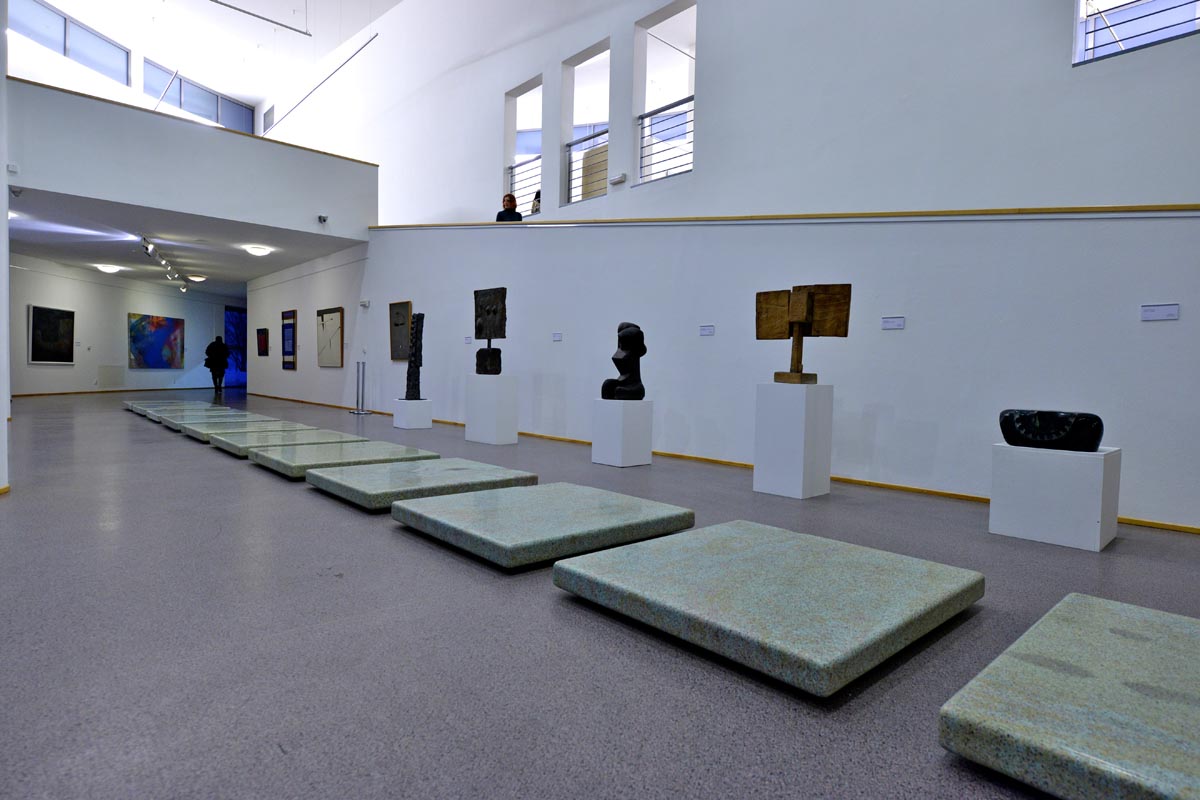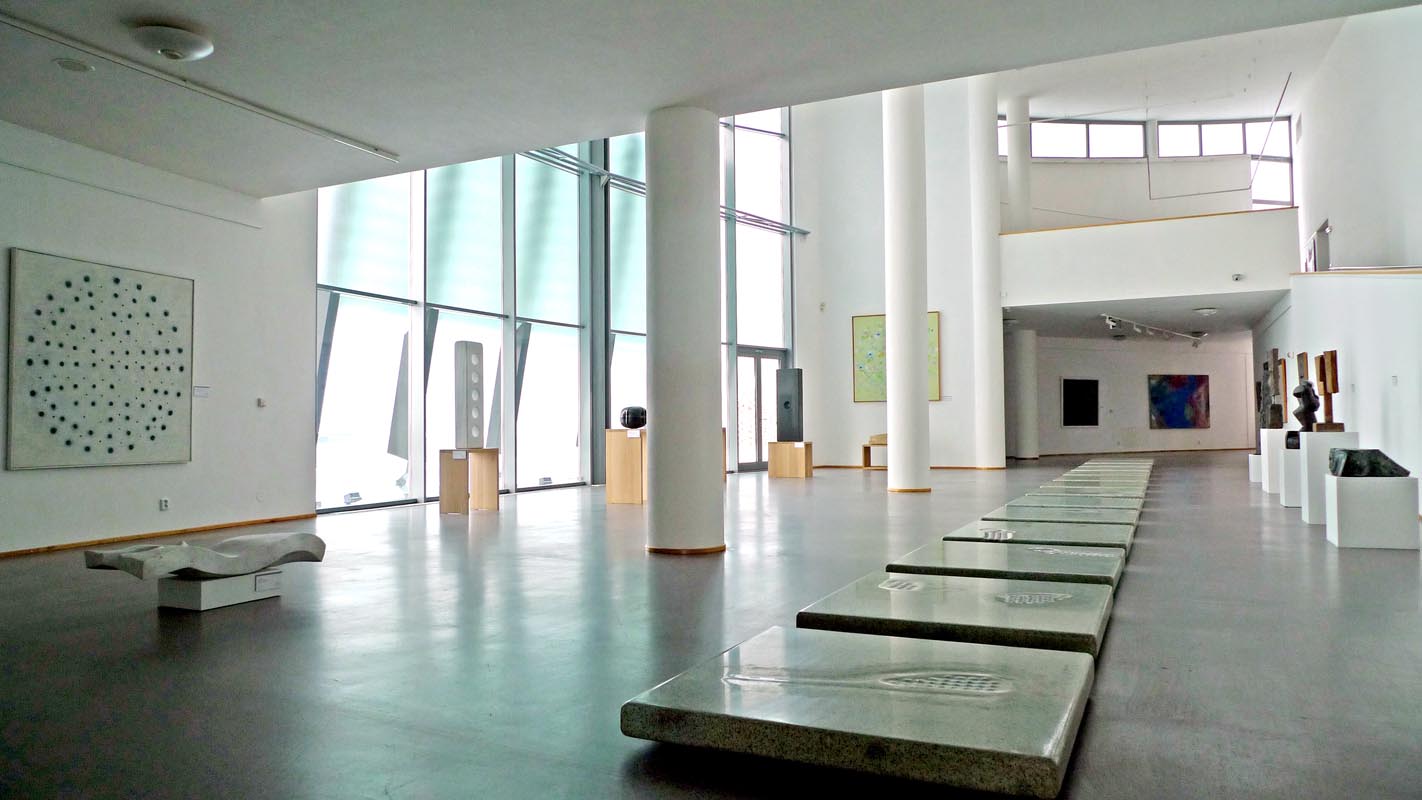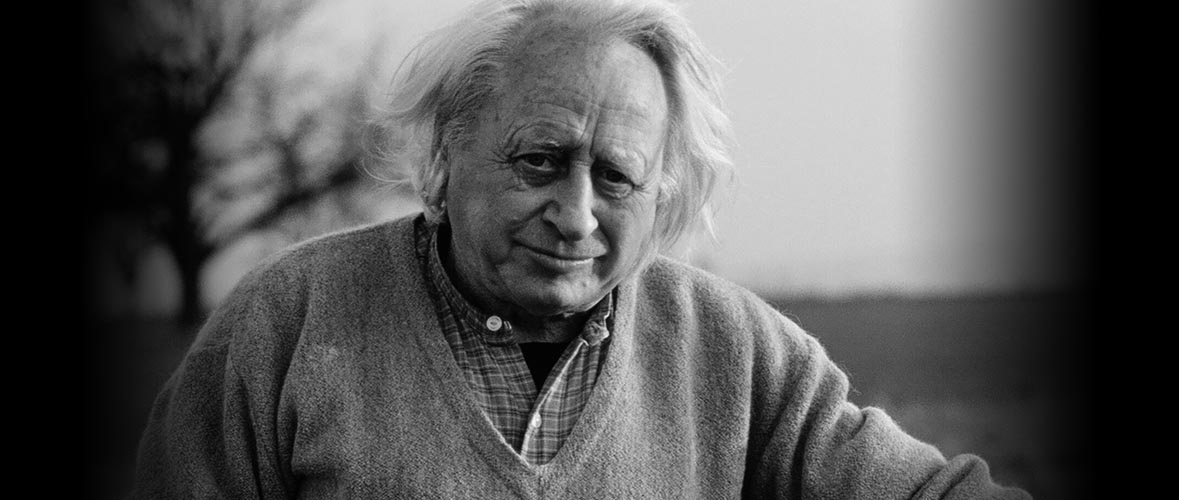

Karl Prantl is an exceptional figure of Austrian and European sculpture of the second half of the 20th Century. His unconventional concept of sculpture, based on his deep relationship to nature, represented a departure from academic practice towards freedom in thinking. He attempted to overcome the limitations in thoughts and reality by gathering artists from around the world at the international sculpture symposia he organised at Sankt Margarethen from 1959. It provided great opportunities for the sculptors of the former East Bloc countries to travel abroad. Therefore this exhibition is not only a tribute to his work but also a tribute to his service to art, which transcends any barriers.
According to Karl Prantl, sculptures belong to nature and should stand where they were created. And thus the majority of his sculptures “live” in nature. He was literally obsessed by stone. Prantl worked mainly with travertine limestone, sandstone, granite, marble and labradorite. His artistic concept and method of working stone reveal the life of stone in its primeval essence, retaining its essence – the block-like mass. By working its surface, he achieved an extraordinary concentration of energy and magical radiation. The titles of many of his works – “meditation stones” – express the artist’s principal intention. This also corresponds with their primary, minimising form, chiefly of a cuboid, a prism or a sphere.
The focus of the exhibition at the Danubiana is the world premiere of the Stations of the Cross, a series of stones as a form of “paving” symbolising suffering. This extraordinary series displays a light colour scheme of Amazon stone and plastic concave surfaces, and is complemented by interior “meditation stones” and fine linear drawings.
The painters Uta Peyrer and her daughter Katarina Prantl undertook an initiative to invite Prantl’s closest friends V. Boštík, T. Huszár, M. Chlupáč, A. Klimo, T. Klimová, E. Kmentová, V. Kraicová, A. Rudavský, J. Seifert, B. Sartori, Z. Sekal, A. Šimotová, M. Uher, R. Uher and O. Zoubek to the exhibition.
Eva Trojanová
The sculptor Karl Prantl was born in 1923 at Pöttsching in the Austrian state Burgenland. He studied painting from 1946 to 1952 with Albert Paris Gütersloh at the Academy of Fine Arts in Vienna. His preoccupation with stone had already begun during his studies. Later he founded a workshop in his native village and was largely concerned with outdoor sculpture. Work in the quarry at Sankt Margarethen inspired him to organise the International Sculpture Symposia in the natural environment. The 1st symposium of European sculptors was held at Sankt Margarethen in 1959. This event has received positive international response and inspired many sculpture symposia all over the world. Prantl participated in the majority of these events. One of them was the sculpture symposium at Vyšné Ružbachy, co-founded by Karl Prantl. The extrordinary position of Karl Prantl among contemporary artists achieved recognition: 1968 – Prize of the City of Vienna for Sculpture; 2008 – Grand Austrian State Prize; 1988 – composer F. Cerha dedicated an orchestral work to him; 1989 – poet F. Mayröcker wrote the poem “Aus einem Stein entsprungen...” dedicated to his sculpture.
Karl Prantl participated in many international symposia: 1961/1962 Berlin, DE; 1962 Negev, IL; 1965 Vyšné Ružbachy, SK; 1968 Proctor, Vermont, US; 1970/1979 Osaka, JP; 1971 New York, USA; 1972 Tivoli, Rome, IT; 1980 Patiala-Punjab, IN; 1985 Larvik, NO; 1991 Shodoshima Island, JP and many others.
He had numerous solo exhibitions: Staempfli Gallery, New York; 1978 Samuel Stein Fine Arts, Chicago; 1982 Museum des 20. Jahrhunderts, Vienna; 1983 Kunsthalle, Hamburg; 1986 Biennale di Venezia; 1991 Kunsthalle, Nuremberg; 1994 Yorkshire Sculpture Park, UK; 1995 Schlosspark Ambras, Innsbruck; 2001 Czech Museum, Prague; 2002 Bratislava City Gallery, Bratislava; 2004 Museum Morandi, Bologna; 2008 Landesmuseum, Mainz; 2012 Galerie Ulysses, Vienna; 2013 Danubiana Meulesteen Art Museum, Bratislava, and many others.

